Complete Solutions to Level-6 of chapter BENZENE of Class 11 book with complete answers and questions
| Class 11 | CHEMISTRY |
| Chapter | BENZENE |
| NARAYANA | Level-6 |
| Number Of Questions | 100 |
| Academic Year | 2023-24 |
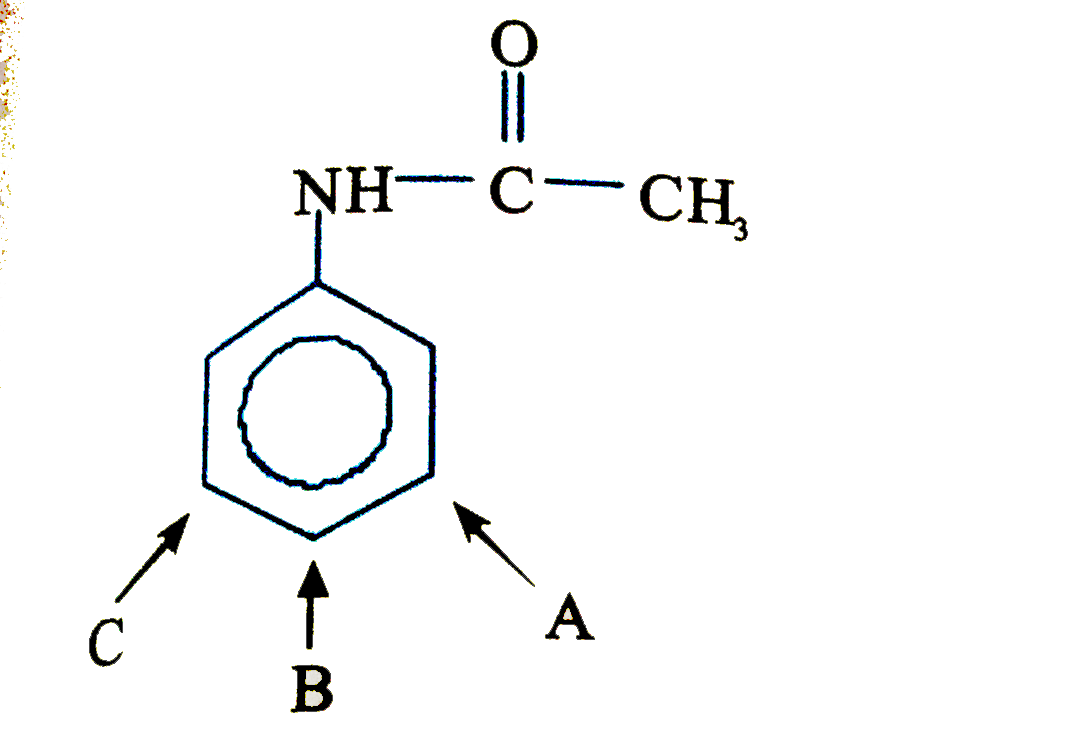
Identify the position where electrophilic aromatic substitution EAS) is most favourable
View Solution
Correct order of rate of EAS (electrophilic aromatic substitution) is
View SolutionThe product obtained from the reaction

View SolutionThe major product formed in the reaction is
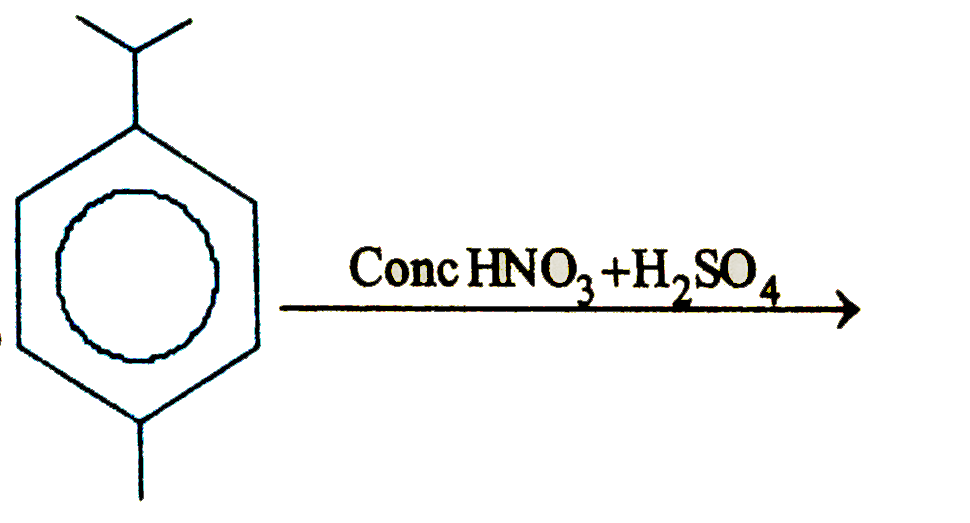
View SolutionIncreasing order of rate of reaction with Conc. `HNO_(3)//H_(2)SO_(4)` is

View SolutionIncreasing order of rate of reaction with `Br_(2)//AlCl_(3)` is

View SolutionRank in order of increasing rate of reaction towards EAS with bromine in the presence of `FeBr_(3)`

View Solution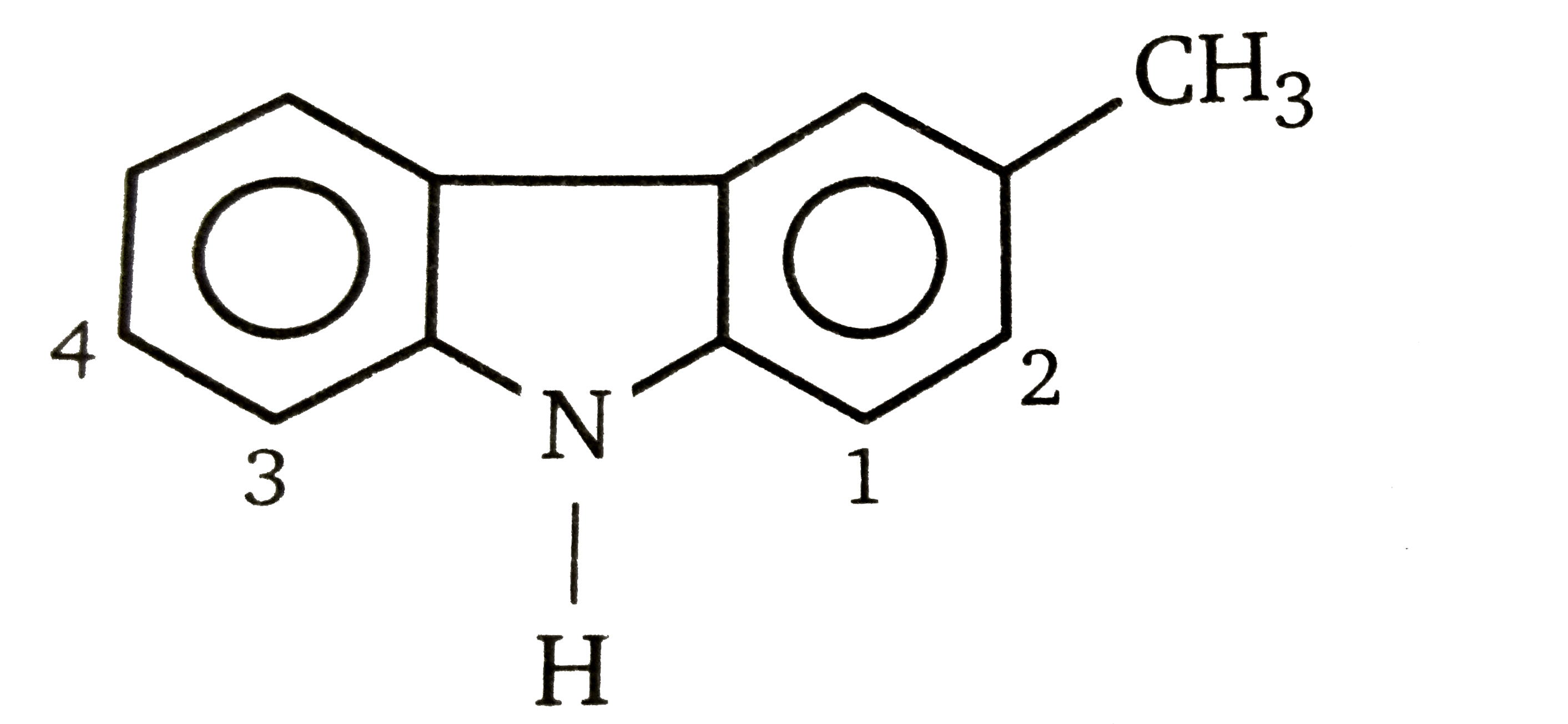
Identify the position where E.A.S. can take place.
View Solution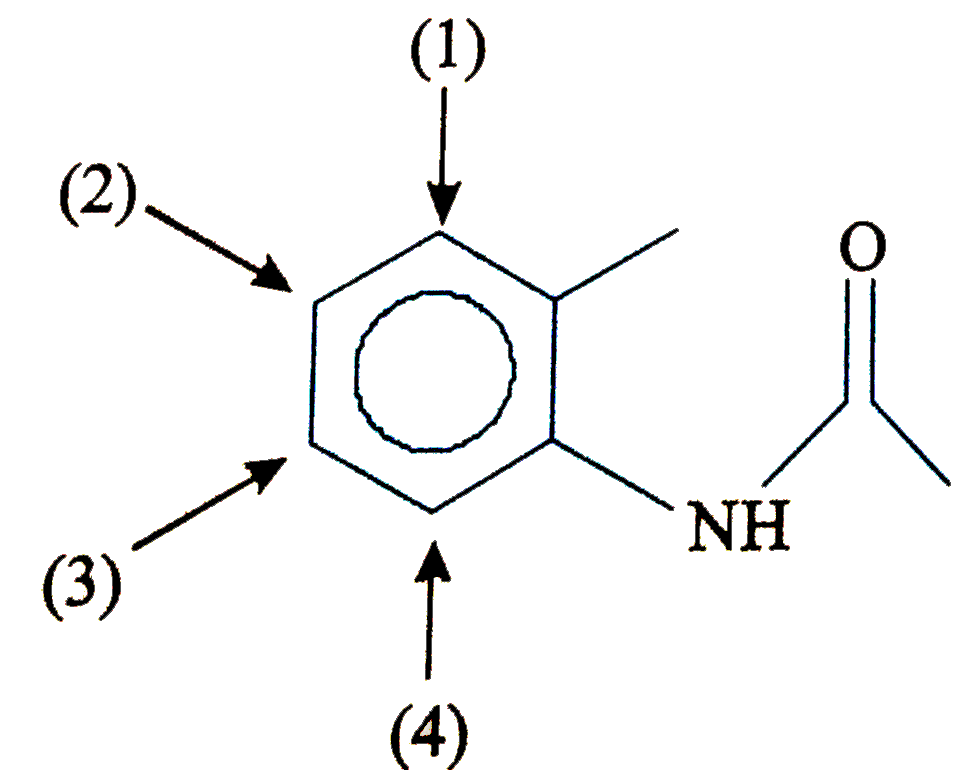
In this, sulhonation is most favorable at the carbon number.
View SolutionArrange the following in decreasing order of reactivity towards EAS (electrophilic aromatic substitution)
(a)
View SolutionArrange the decreasing order of rate of electrophilic aromatic substitution

View SolutionThe major product of the reaction is

View Solution
Arrangement in their deacreasing order of rate of electrophilic aromatic substitution
View SolutionWhich position will be attacked most rapidly by the nitronium ion `(-NO_(2))^(+)` when the compound undergoes nitration with `HNO_(3)//H_(2)SO_(4)`:

View SolutionWhat is the correct order of `o//p` ration when `E^(+)` attackes the following system ?
(A) `PhF`
(B) `PhCl`
(C) `PhBr`
(D) `PhI`
View SolutionHow many products are capables of beings formed from toluene in each of following reaction ?
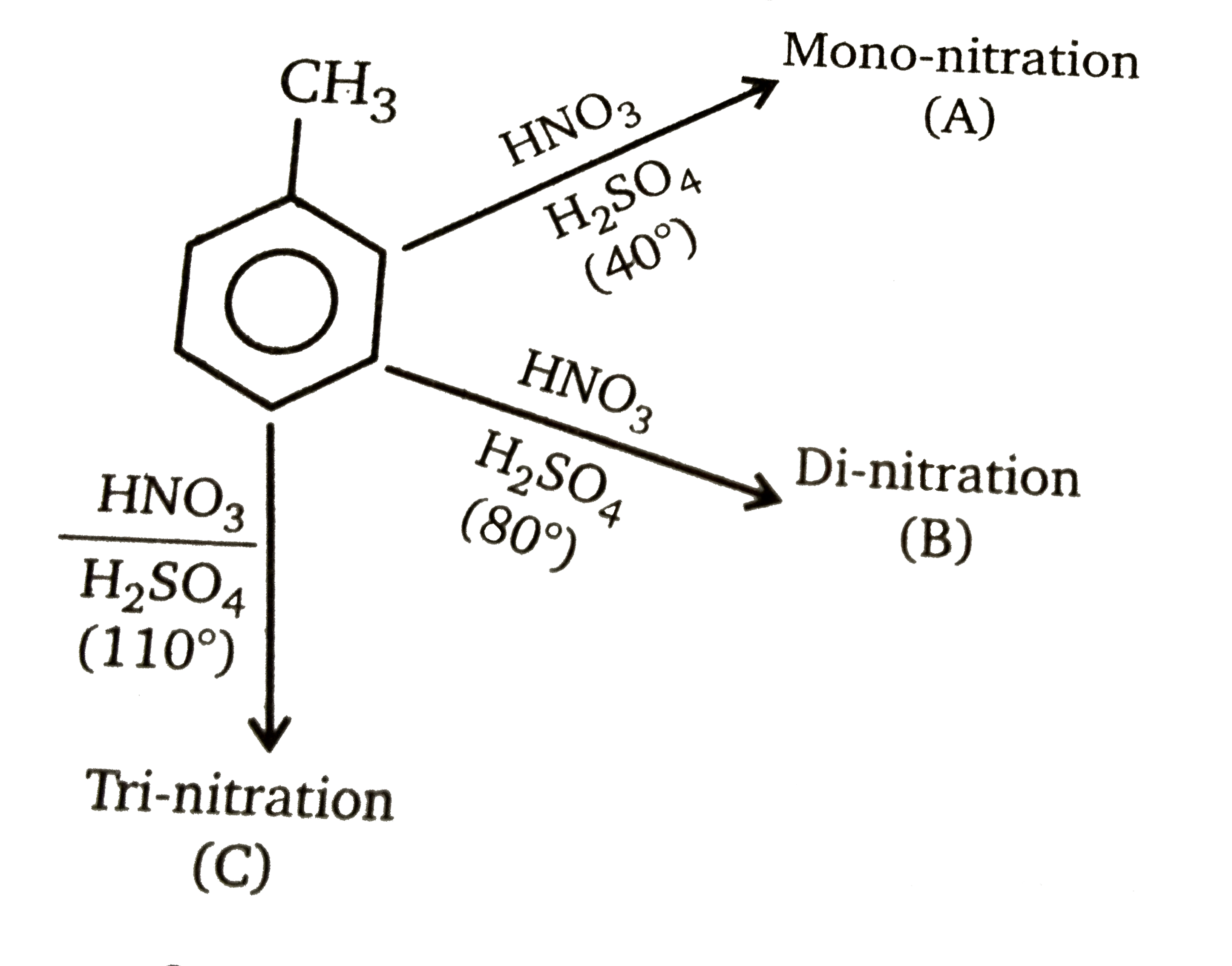
View Solution product (C) is
product (C) is
View SolutionWhich of the following hydrogens is most easily abstracted on reaction with bromine free radicals, `Br^(.)` ?
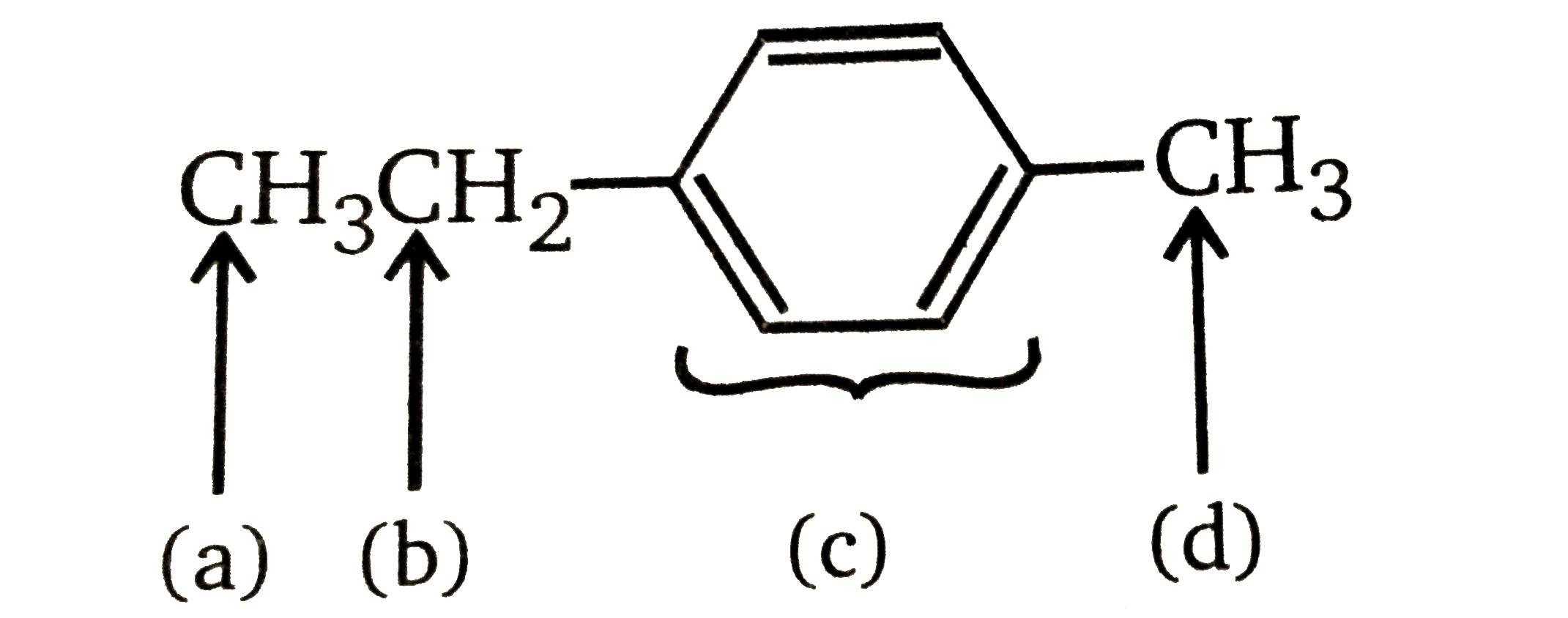
View SolutionFor the reaction, the product expected is :
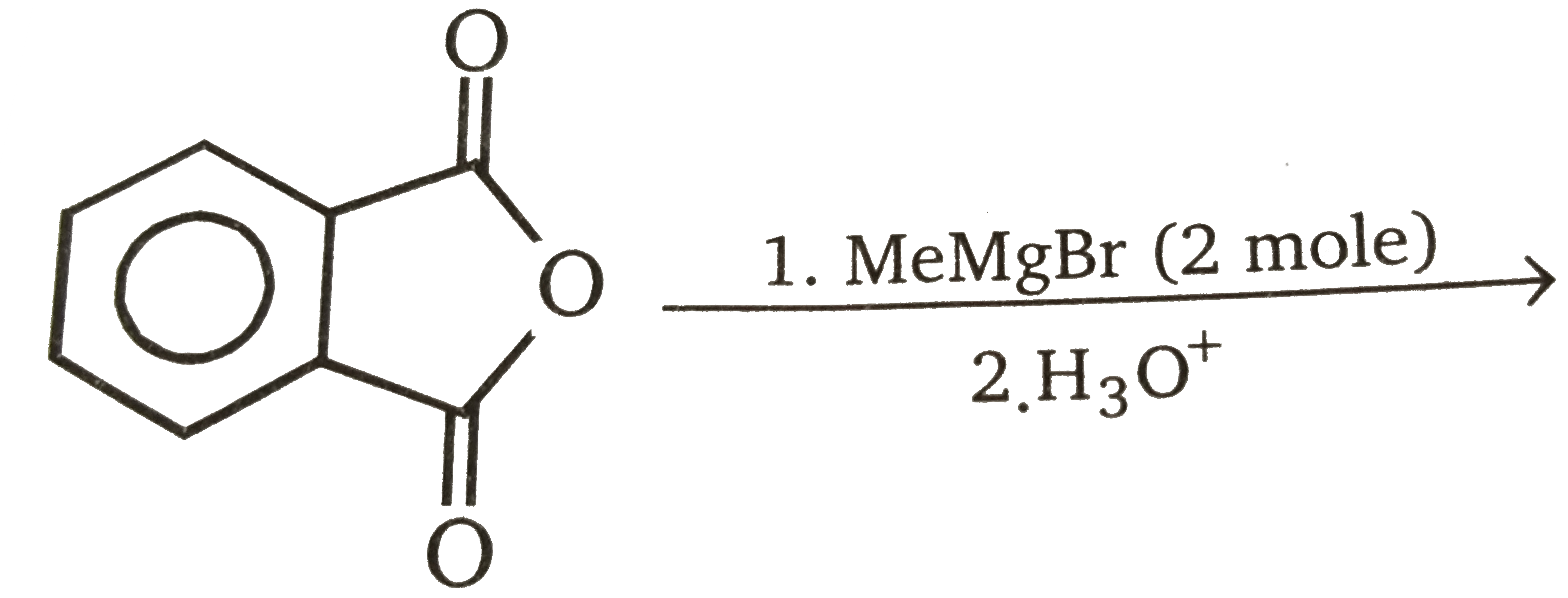
View Solution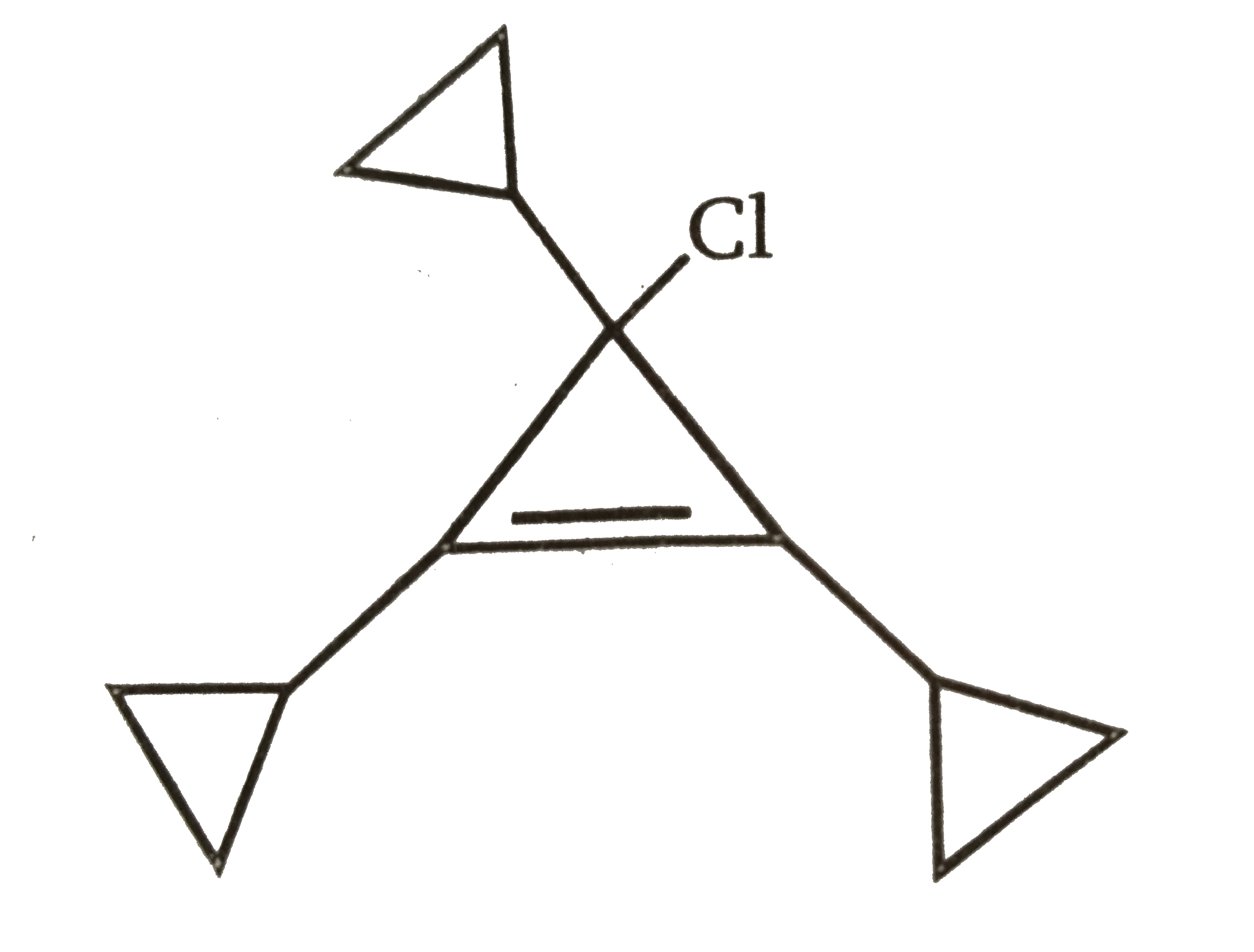
In the above compound Cl will liberated easily in the form of:
View SolutionIn the sulhonation, acetylation and formylation of benzene the group of effective electrophiles would be
View Solution`C_(6)H_(6)+Aoverset(AlCl_(3))toC_(6)H_(5)CONH_(2)`. A in the above reaction is
View Solution`C_(6)H_(6)underset(AlCl_(3))overset(CH_(3)COCl)toAunderset(HCl)overset(Zn-Hg)toB`. The end product in the above sequence is
View SolutionWhich of the following species is expected have maximum ethalpy in an electrophilic aromatic substitution reaction.

View SolutionFor the electrophilic substitution reaction involving nitration, which of the following sequence regarding the rate of the reaction is true?
View SolutionFor the electrophilic substitution reaction sulphonation which of the following sequence regarding the rate of the reaction is true
View SolutionWhich of the following will undergo nitration slower than benzene ?
View SolutionThe compound that does not give a tribromo derivative on treatment with bromine water is
View SolutionAmongst the following, moderately activating groups is
View Solution
View Solution Major product above the reaction.
Major product above the reaction.
View Solution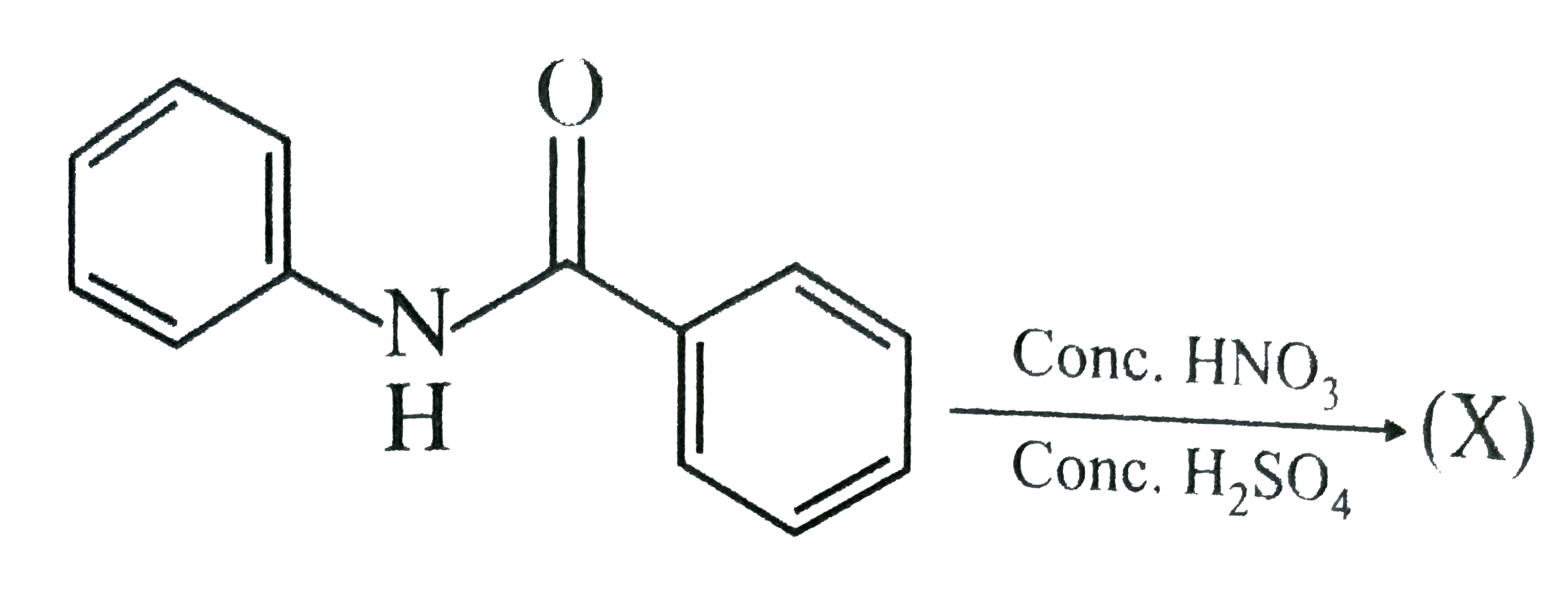
In the following reaction, the structure of the major product (X) is:
View SolutionWhich of the following is the most reactive towards eklectrophilic aromatic substitution?
View SolutionThe reaction of
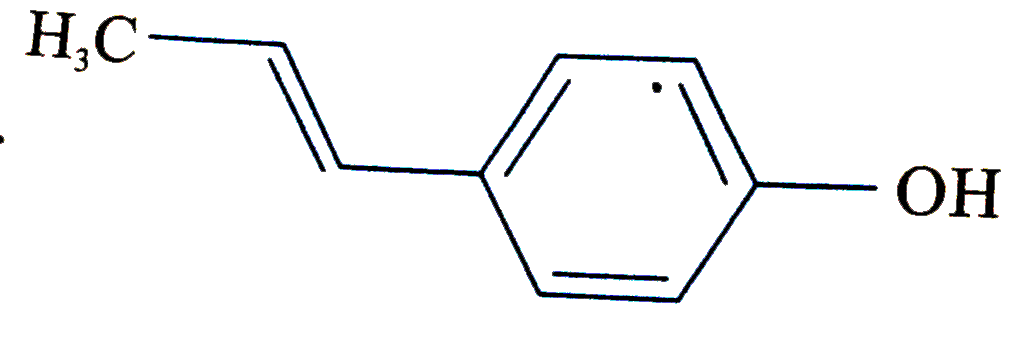 With HBr gives:
With HBr gives:
View Solution
View SolutionBenzene on reaction with ICI in presence of anhydrous `AlCl_(3)` gives?
View SolutionComplete the following reaction
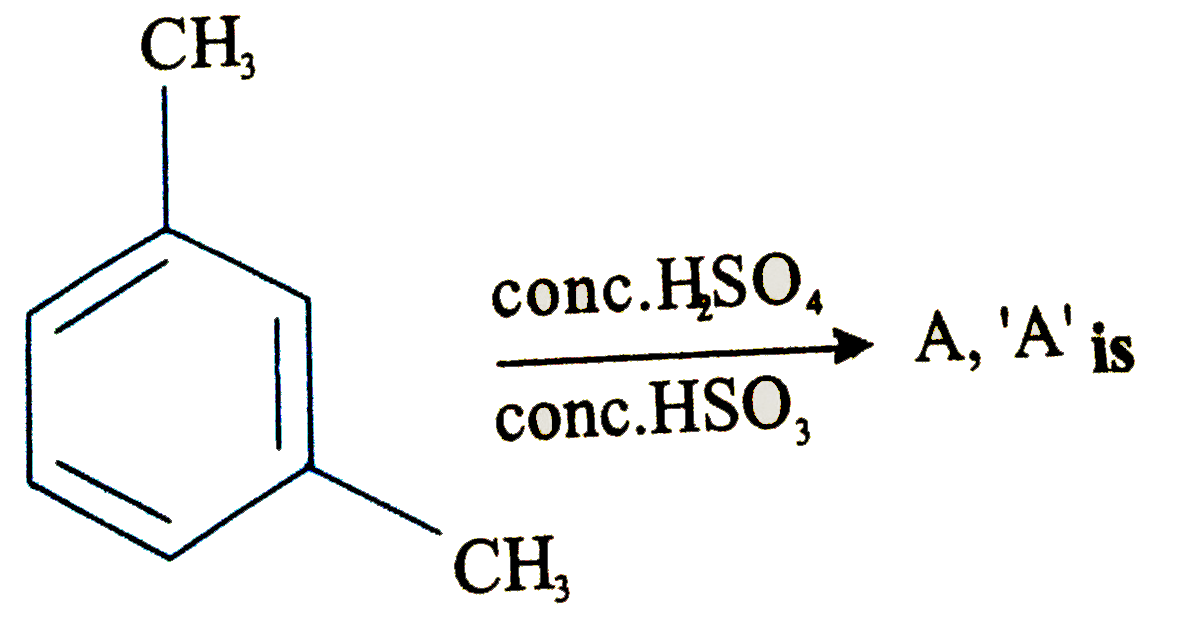
View SolutionIn which case, EAS will not be in meta position?
View SolutionWrite the major product of the following reaction

View Solution
The compound (E) is:
View Solution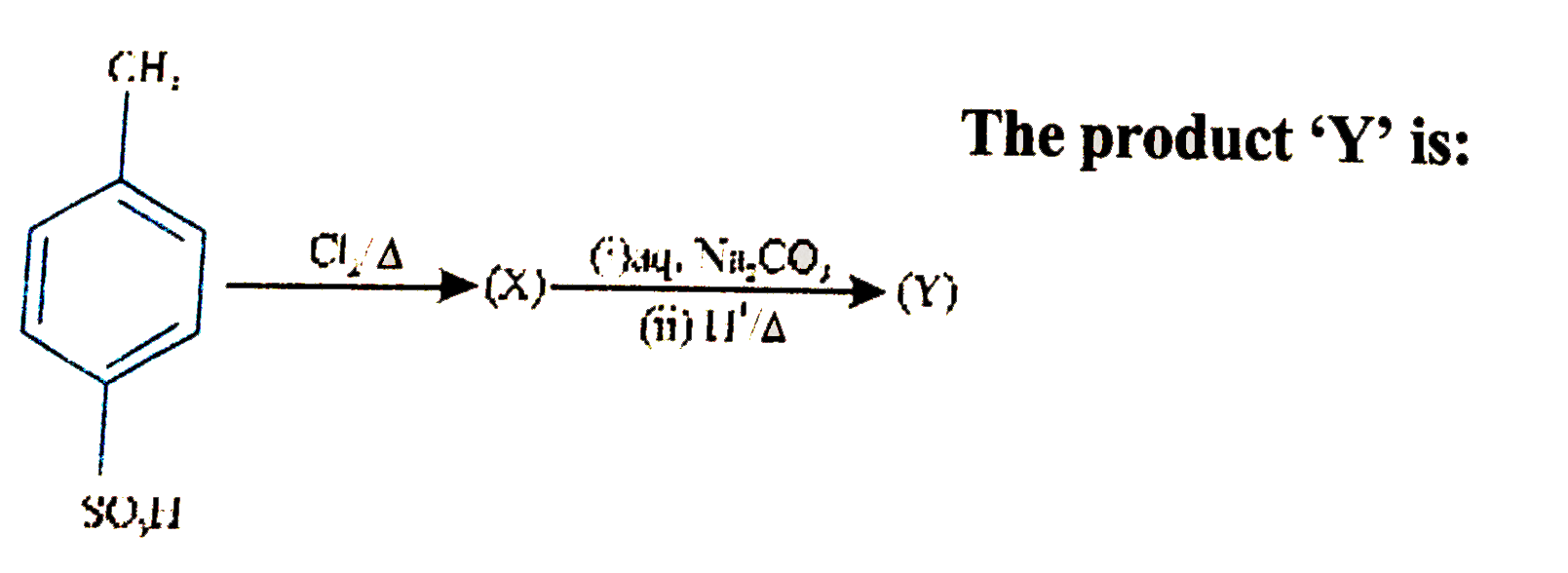
The product 'Y' is:
View SolutionCorrect statement regarding the electrophilic substitution of `C_(6)H_(6)`
View Solution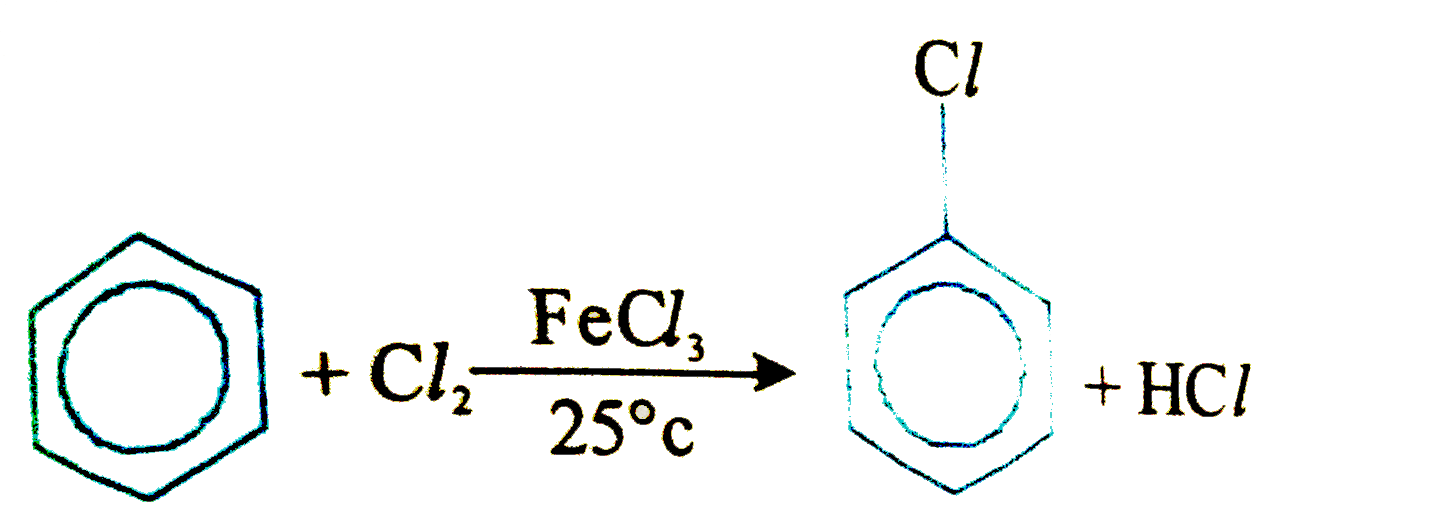
The rate of the reaction depends on the concentration of
View Solution Correct statements about this reaction
Correct statements about this reaction
View Solution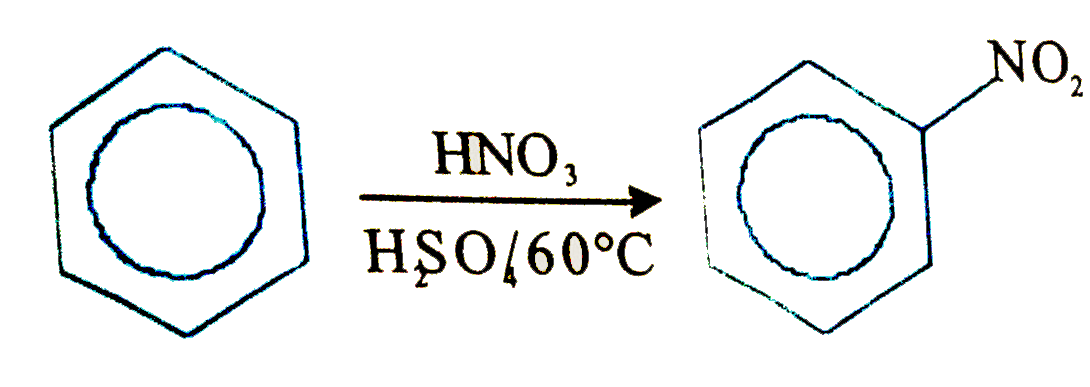
In the above reaction
View Solution
Correct statement about this reaction is/are
View Solution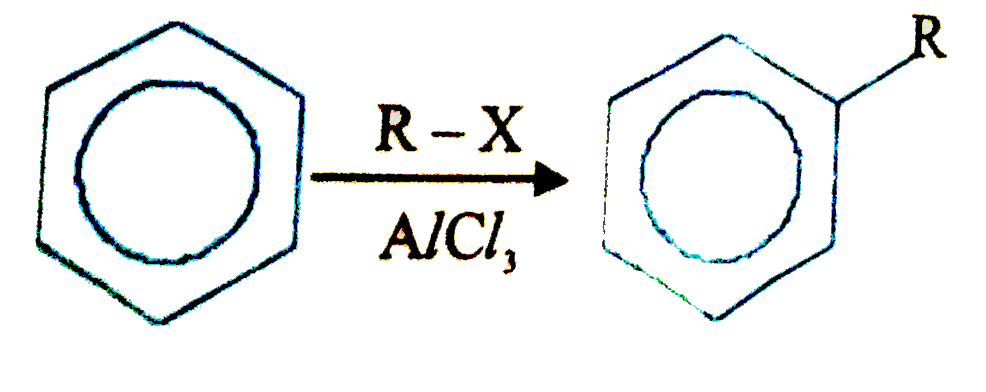
Generally rate of the reaction depends on the concentration of
View Solution
Major product. In this reaction.
View Solution
The correct statement(s) regarding the above reaction is/are
View SolutionBenzoic acid can be prepared by the oxidation of
View SolutionIn which cases `NO_(2)^(o+)` will attack meta position
View Solutionp-Chlorotoluene on nitration given
View Solution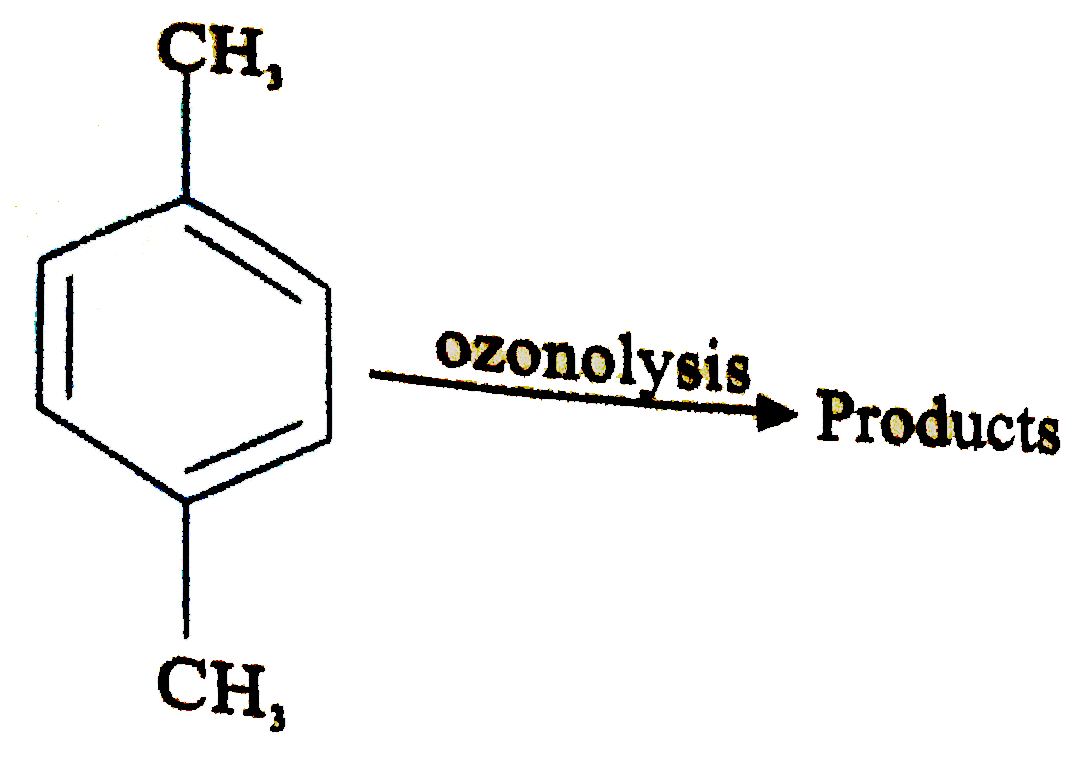 The products formed are:
The products formed are:
View SolutionThe reaction of biphenyl with HOCl in the presence of a strong acid gives
View SolutionWhich of the following is an electrophilic substitution reaction?
View Solutionm-Nitrobenzoic acid can be obtained by
View SolutionIodobenzene can be obtained by-
View SolutionEthyl benzene can be prepared from
View SolutionWhen
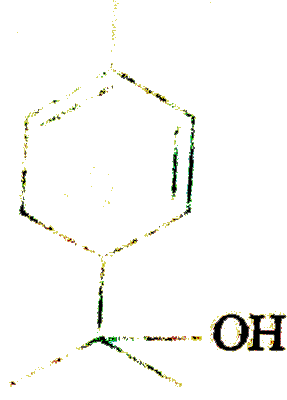 is reacted with conc. `H_(2)SO_(4)` and heated then the intermediates and products formed are
is reacted with conc. `H_(2)SO_(4)` and heated then the intermediates and products formed are
View SolutionWhich of the following statement(s) is/are correct about benzene?
View SolutionWhich of the following heterocyclic compound/s might be aromatic?
View SolutionThe compound
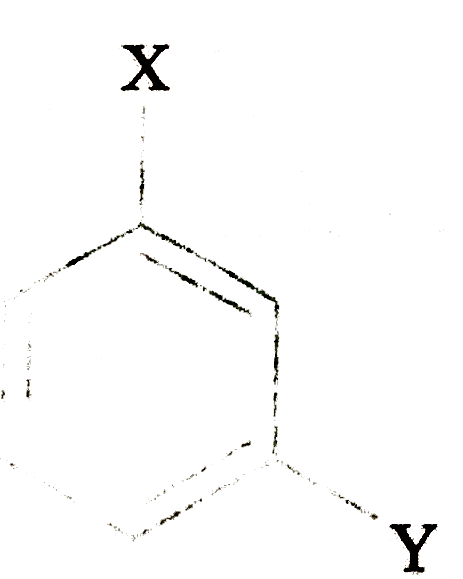 (where X is an O,P-directing group and Y is m-directing group) is subjected to electrophilic substitution reaction for introduction of Z. the compound formed would be
(where X is an O,P-directing group and Y is m-directing group) is subjected to electrophilic substitution reaction for introduction of Z. the compound formed would be
View SolutionAn aromatic molecule will
View SolutionA benzene ring deactivated by strong & moderate electron withdrawing groups such a molecule is not electron rich enough to under go friedel-craft's reaction
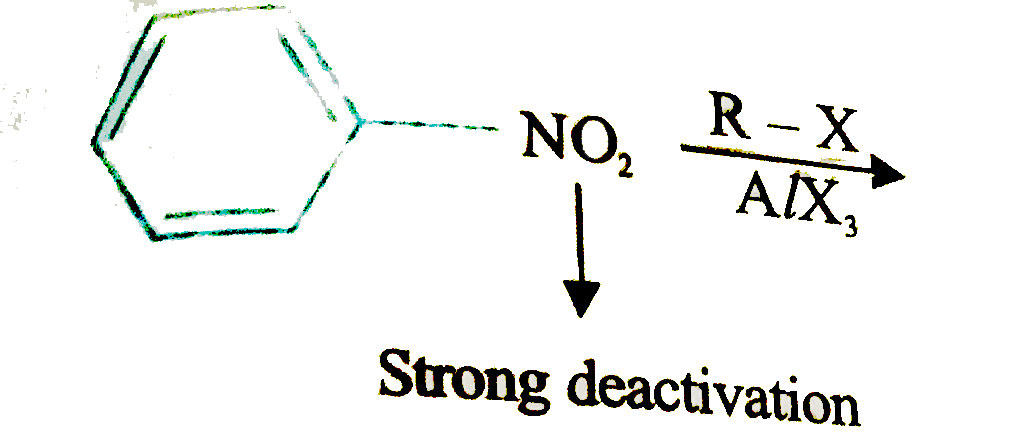
Friedel craft reaction also does not occur with `NH_(2)` group as it react with `AlCl_(3)` and produce deactivating group.

Q. Which of the following compound undergoes Friedel-crafts alkylation reaction
View SolutionA benzene ring deactivated by strong & moderate electron withdrawing groups such a molecule is not electron rich enough to under go friedel-craft's reaction
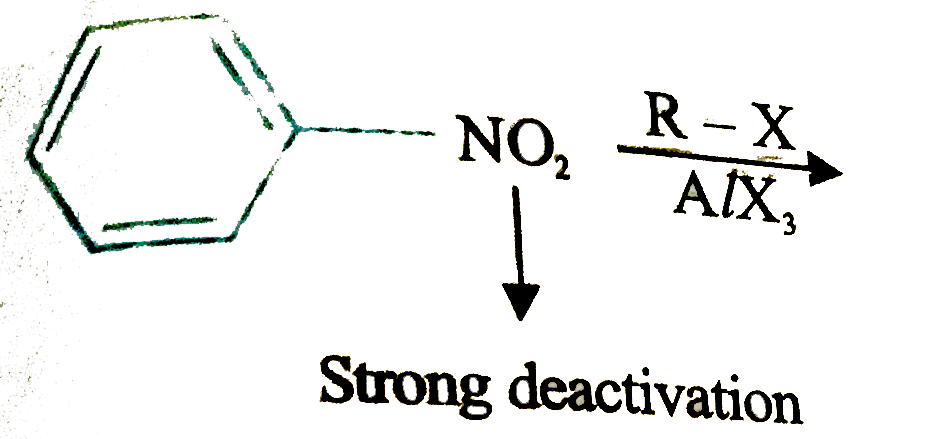
Friedel craft reaction also does not occur with `NH_(2)` group as it react with `AlCl_(3)` and produce deactivating group.

Q. Which of the following can not be starting material for this compound `Ph-underset(O)underset(||)(C)-CH_(2)-Ph`
View SolutionA benzene ring deactivated by strong & moderate electron withdrawing groups such a molecule is not electron rich enough to under go friedel-craft's reaction

Friedel craft reaction also does not occur with `NH_(2)` group as it react with `AlCl_(3)` and produce deactivating group.

Q. Which of the following sequence of reaction is correct for the synthesis of product
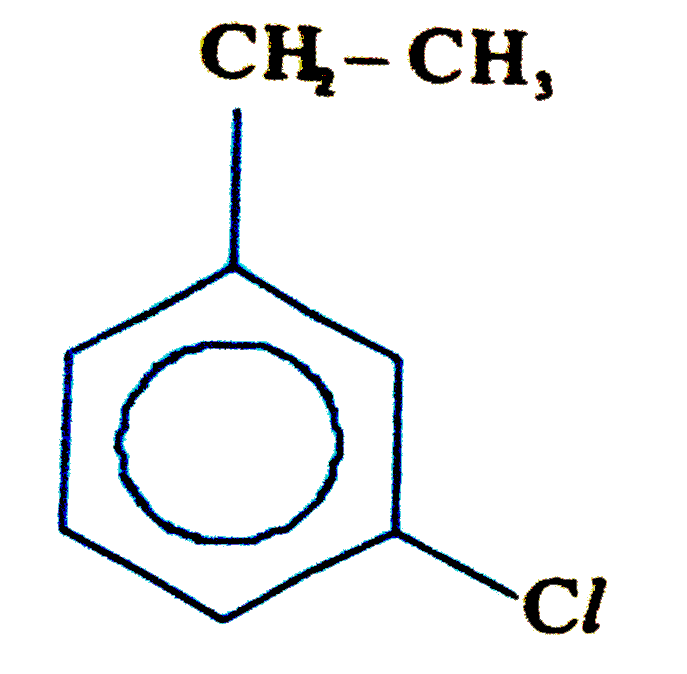
View SolutionBenzene under goes electrophilic substitution reactions like nitration, sulphonation, halogenation, friedel crafts alkylation and friedel crafts acylation etc. . . Among these Friedel crafts alkylation and acylation are important, which are conducted in presence of lewis acid catalyst and suitable reagent.
Q.
Here 'X' can be
View SolutionBenzene under goes electrophilic substitution reactions like nitration, sulphonation, halogenation, friedel crafts alkylation and friedel crafts acylation etc. . . Among these Friedel crafts alkylation and acylation are important, which are conducted in presence of lewis acid catalyst and suitable reagent.
Q. Here 'Y' is
Here 'Y' is
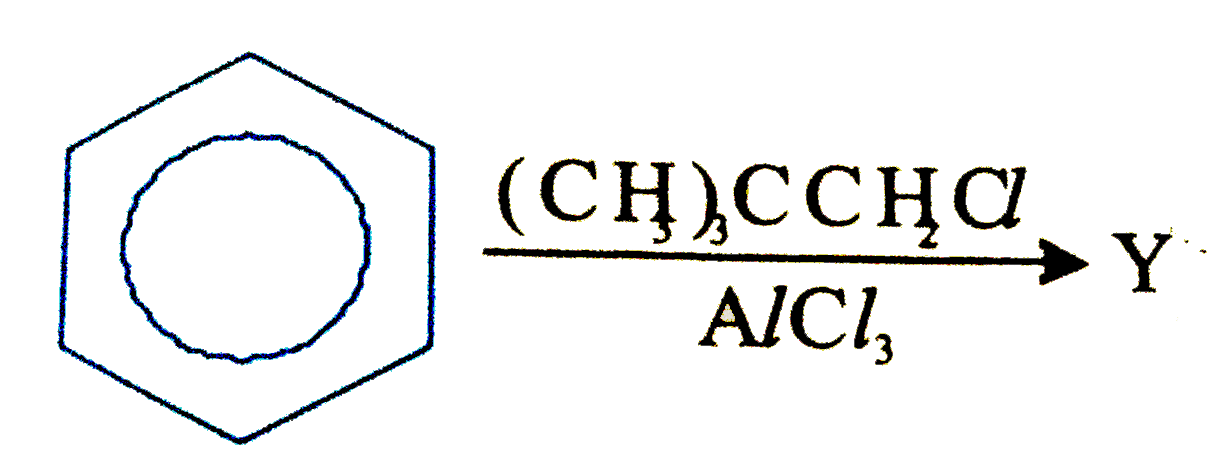
View Solution
Directing nature of substituted aromatic compound is decided by stability of `sigma`-complex or areniumion. If `sigma`-complex is stabilised at O-and P-position by attacks of electrophile then the group is O-and P-directing, but if `sigma`-complex si stabilisd at m-position the group will be meta directing on the basis of above explanation. find out correct answers of following questions.
Q. Which of the following is m-directing.
View Solution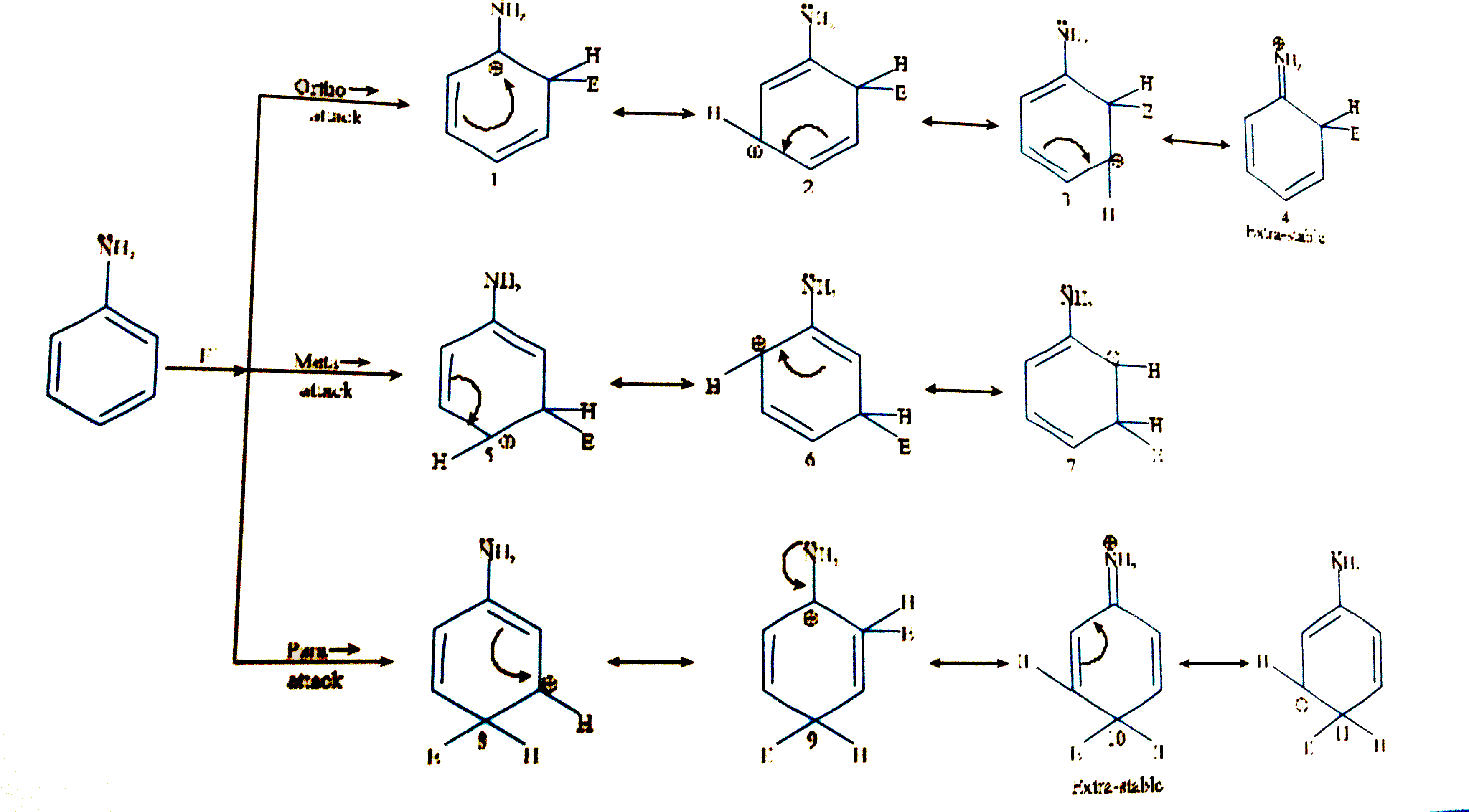
Directing nature of substituted aromatic compound is decided by stability of `sigma`-complex or areniumion. If `sigma`-complex is stabilised at O-and P-position by attacks of electrophile then the group is O-and P-directing, but if `sigma`-complex si stabilisd at m-position the group will be meta directing on the basis of above explanation. find out correct answers of following questions.
Q. Which of the following is not O- and P-directing
View Solution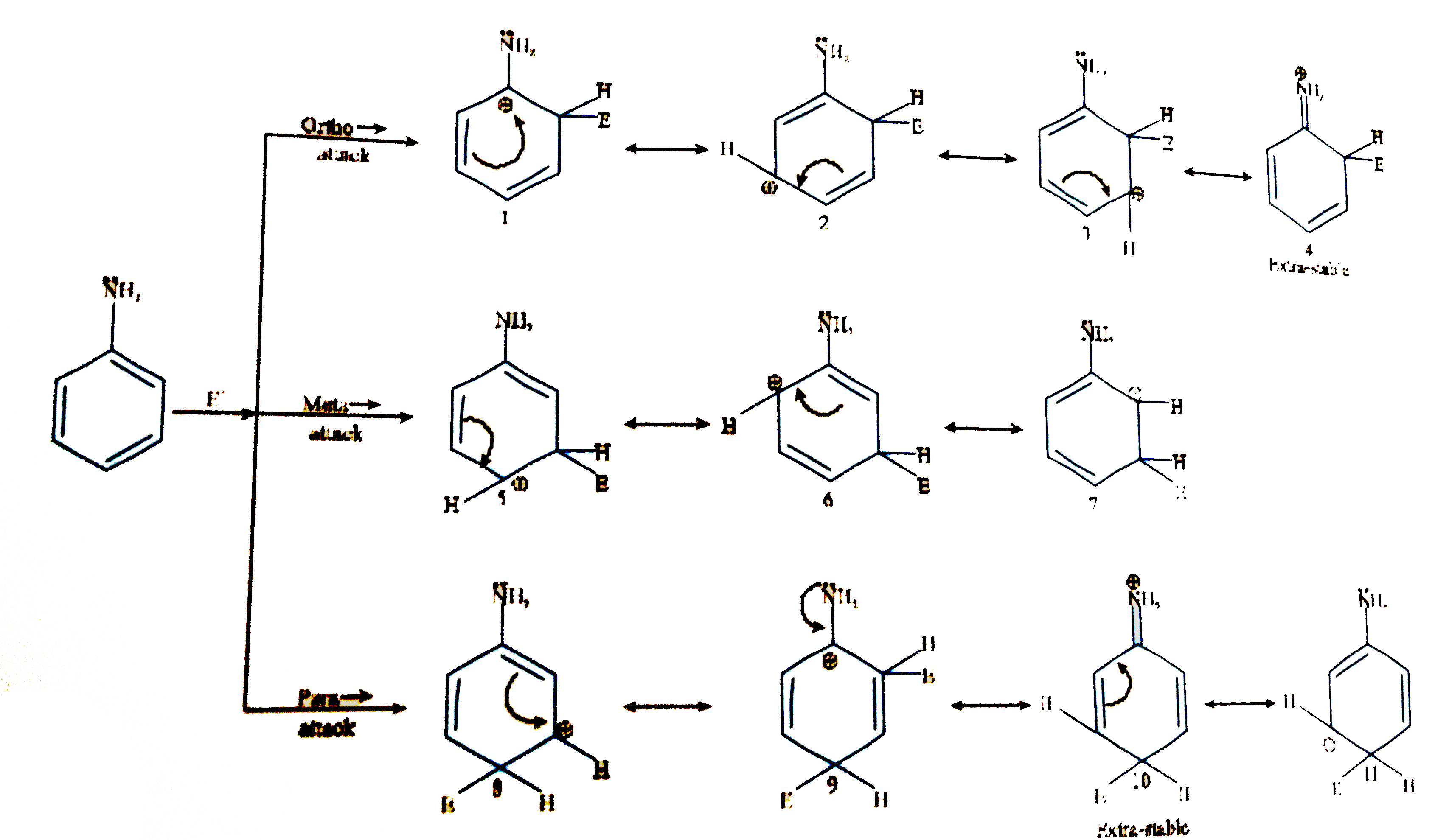
Directing nature of substituted aromatic compound is decided by stability of `sigma`-complex or areniumion. If `sigma`-complex is stabilised at O-and P-position by attacks of electrophile then the group is O-and P-directing, but if `sigma`-complex si stabilisd at m-position the group will be meta directing on the basis of above explanation. find out correct answers of following questions.
Q. Which of the followin is -O- and p-directing
View SolutionGiven is the energy profile diagram of nitration of benzene using mixed acid `(HNO_(3)+H_(2)SO_(4))`
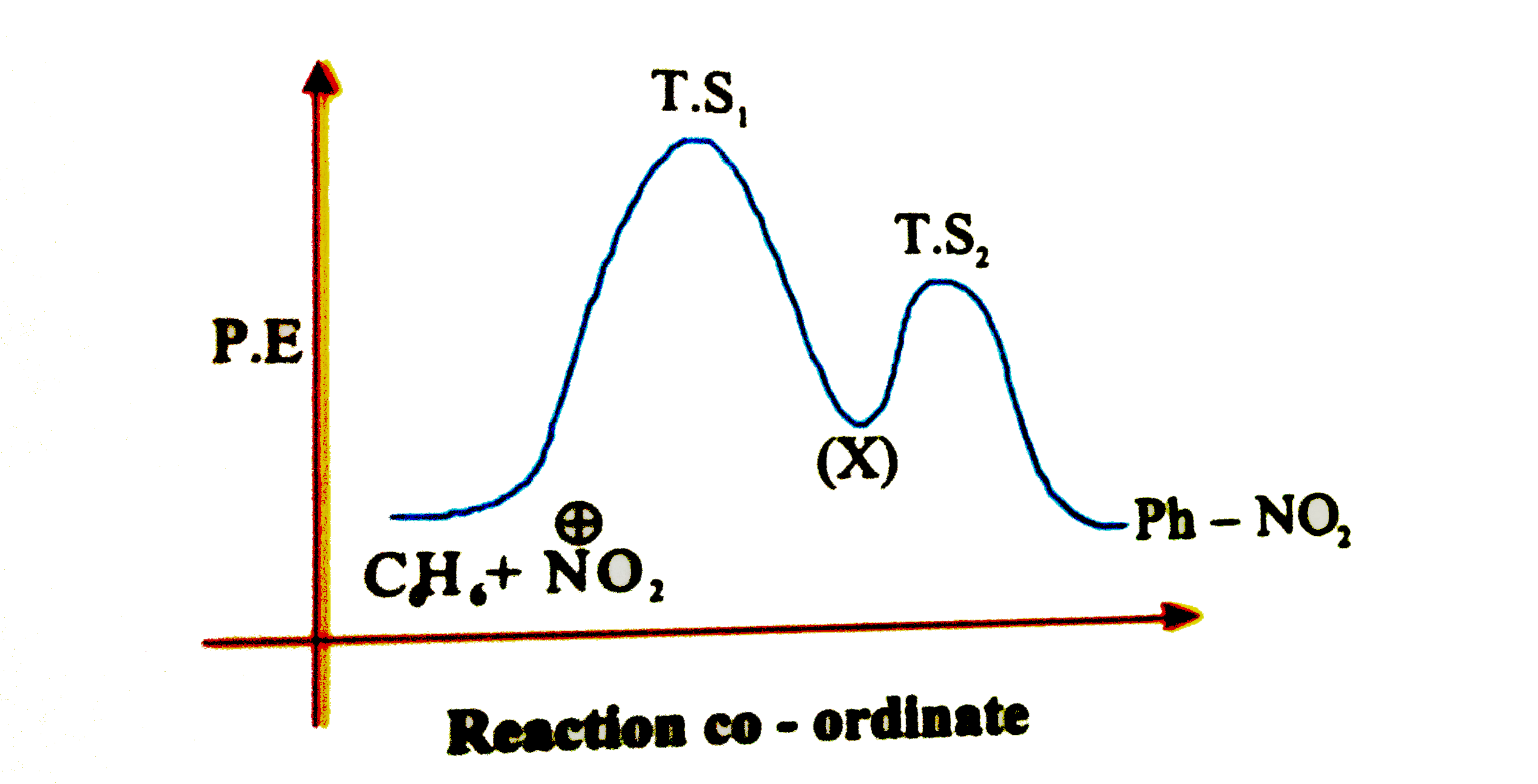
Q. Identify (X) in above reaction
View SolutionGiven is the energy profile diagram of nitration of benzene using mixed acid `(HNO_(3)+H_(2)SO_(4))`
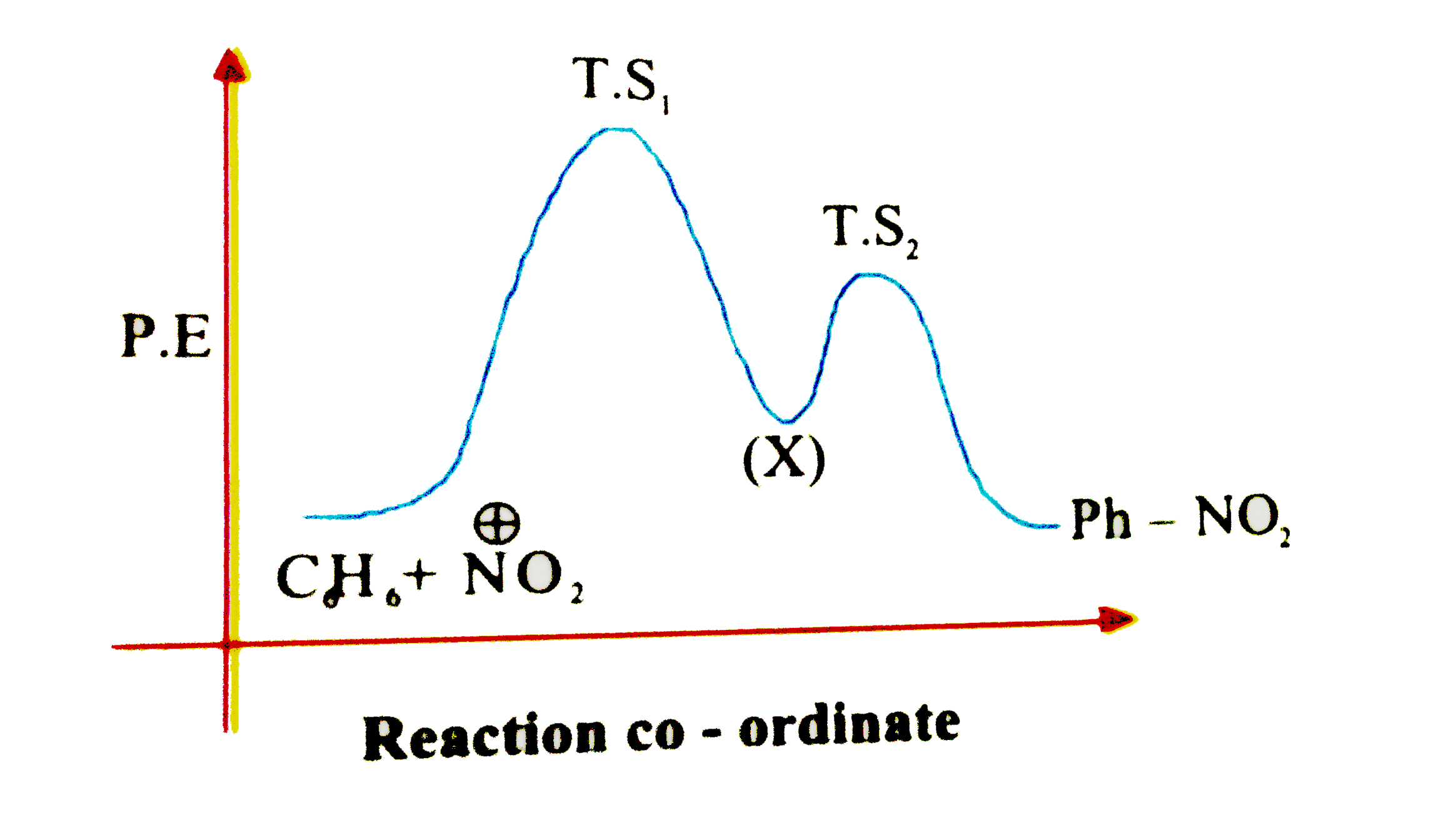
Q. Identify `T.S_(1)` in the above reaction
View SolutionGiven is the energy profile diagram of nitration of benzene using mixed acid `(HNO_(3)+H_(2)SO_(4))`
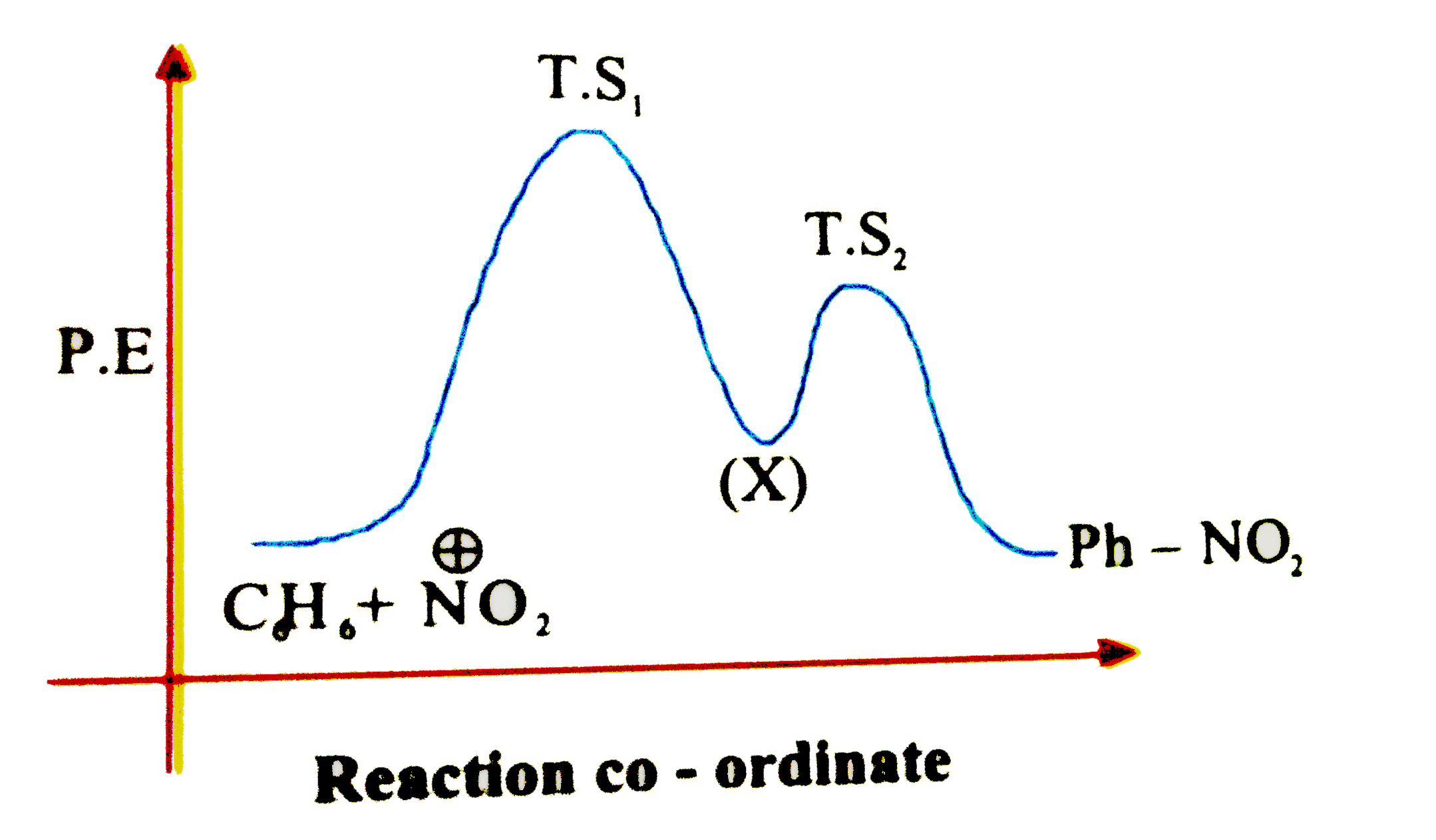
Q. Identify `T.S_(2)` in the above reaction
View SolutionA third group is least likely to enter between two groups in the mta relationship. This is the result of steric hindrance and increases in importance with the size of the groups on the ring and with the size of the attaching species. When a meta-directing group is meta to an ortho-para directing group, the incoming group primarily goes ortho to the meta directing group rather than para.
Q. Chlorination of m-chloro nitro benzene gives
View SolutionA third group is least likely to enter between two groups in the mta relationship. This is the result of steric hindrance and increases in importance with the size of the groups on the ring and with the size of the attaching species. When a meta-directing group is meta to an ortho-para directing group, the incoming group primarily goes ortho to the meta directing group rather than para.
Q.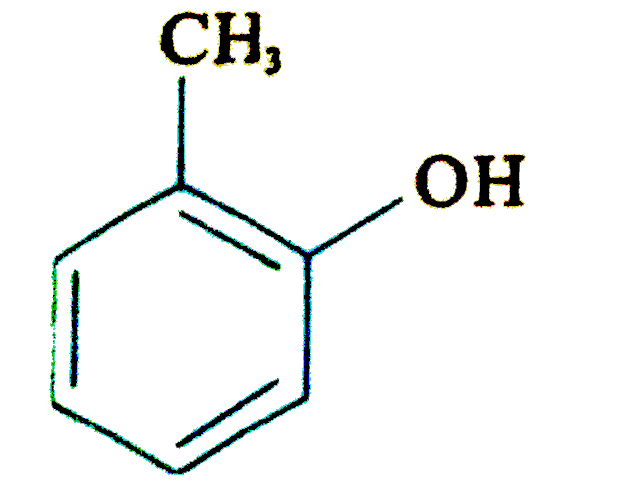
View SolutionA third group is least likely to enter between two groups in the mta relationship. This is the result of steric hindrance and increases in importance with the size of the groups on the ring and with the size of the attaching species. When a meta-directing group is meta to an ortho-para directing group, the incoming group primarily goes ortho to the meta directing group rather than para.
Q.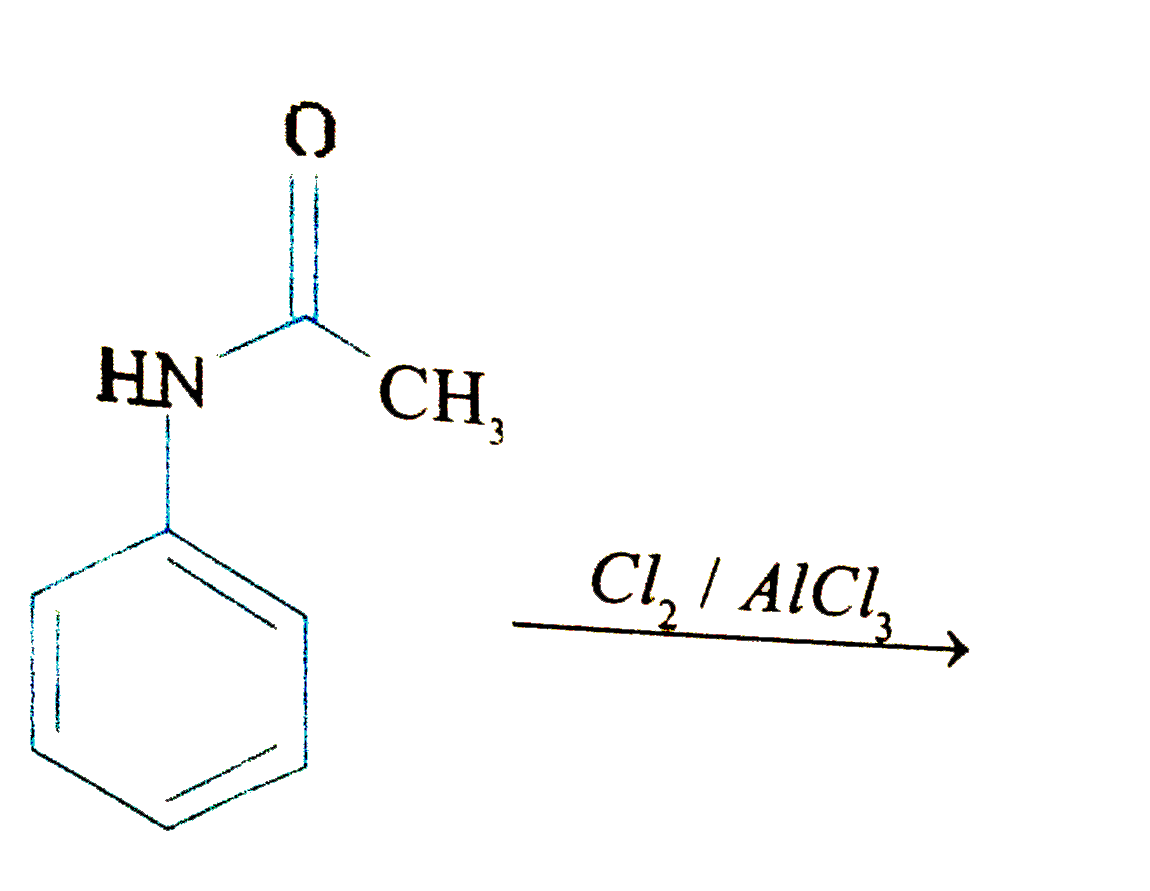
View SolutionA third group is least likely to enter between two groups in the mta relationship. This is the result of steric hindrance and increases in importance with the size of the groups on the ring and with the size of the attaching species. When a meta-directing group is meta to an ortho-para directing group, the incoming group primarily goes ortho to the meta directing group rather than para.
Q.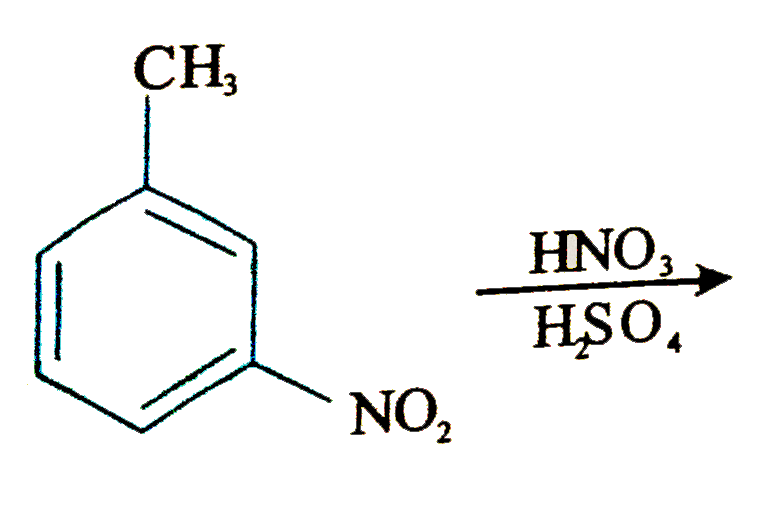
View SolutionIt is not always easy to predict the position of attack on multiple substituted benzene. If the benzene ring bears different ortho/para directing group at the 1 and 4 position, the position, the position of further substitution is not immediately clear. sometimes steric effect determine the outcome. in other cases, electronic factors determine the outcome, and further reaction will be at the position activated by the more strongly activating group. Some substituents are so strongly activating that no catalyst is needed to restrict the reaction to mono-substitution. It is possible to reduce the activity of such groups (by side chain reaction) so that the reaction can be stopped after mono substitution then and again by a side cahin reaction the original group is restored. effective use can sometimes be made of removable blocking groups on the ring.
Q. Which of the following synthesis could not be done without involving blocking position on the ring?
View SolutionIt is not always easy to predict the position of attack on multiple substituted benzene. If the benzene ring bears different ortho/para directing group at the 1 and 4 position, the position, the position of further substitution is not immediately clear. sometimes steric effect determine the outcome. in other cases, electronic factors determine the outcome, and further reaction will be at the position activated by the more strongly activating group. Some substituents are so strongly activating that no catalyst is needed to restrict the reaction to mono-substitution. It is possible to reduce the activity of such groups (by side chain reaction) so that the reaction can be stopped after mono substitution then and again by a side cahin reaction the original group is restored. effective use can sometimes be made of removable blocking groups on the ring.
Q. Which of the following is the correct major product?
View Solution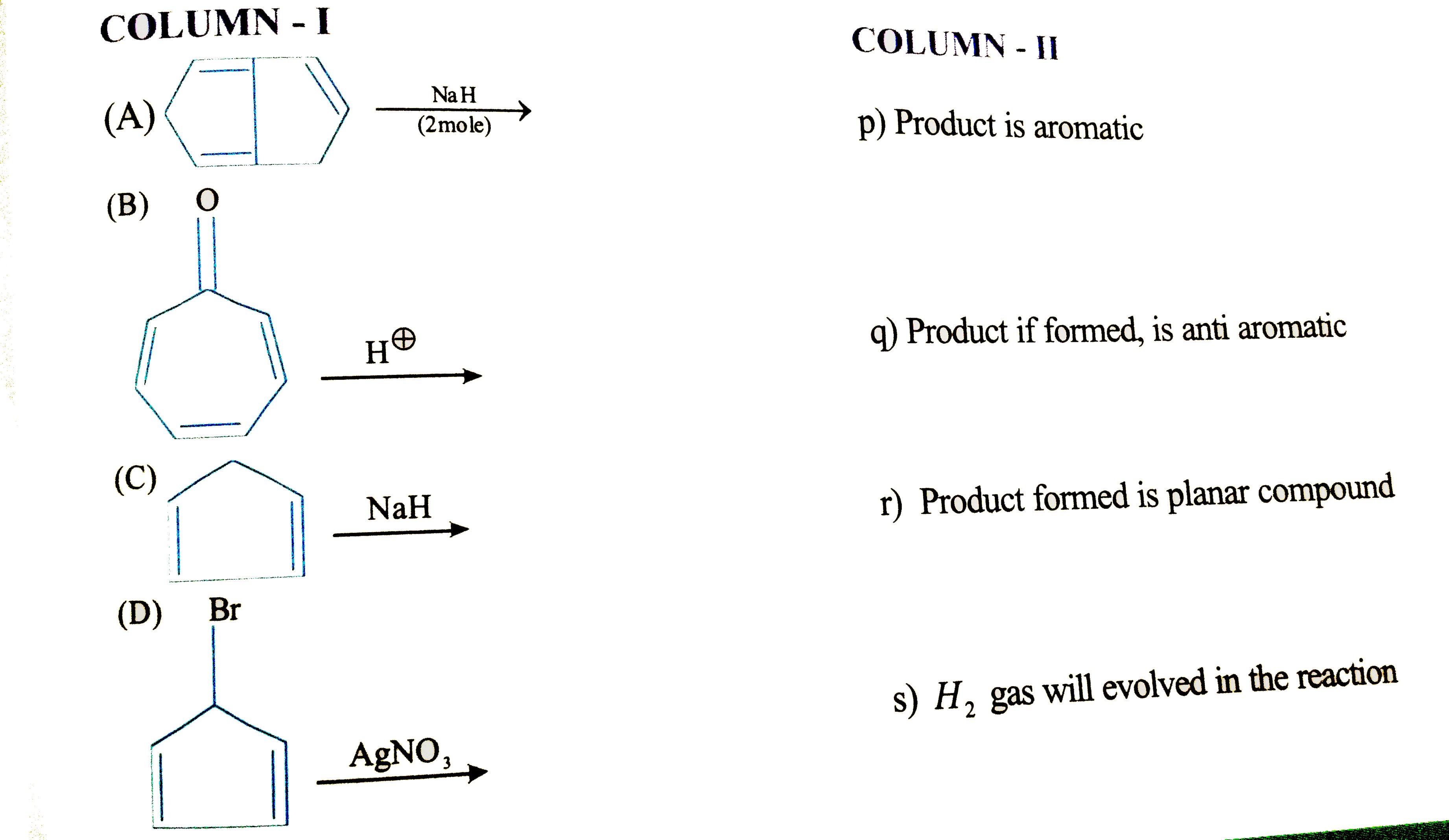
View Solution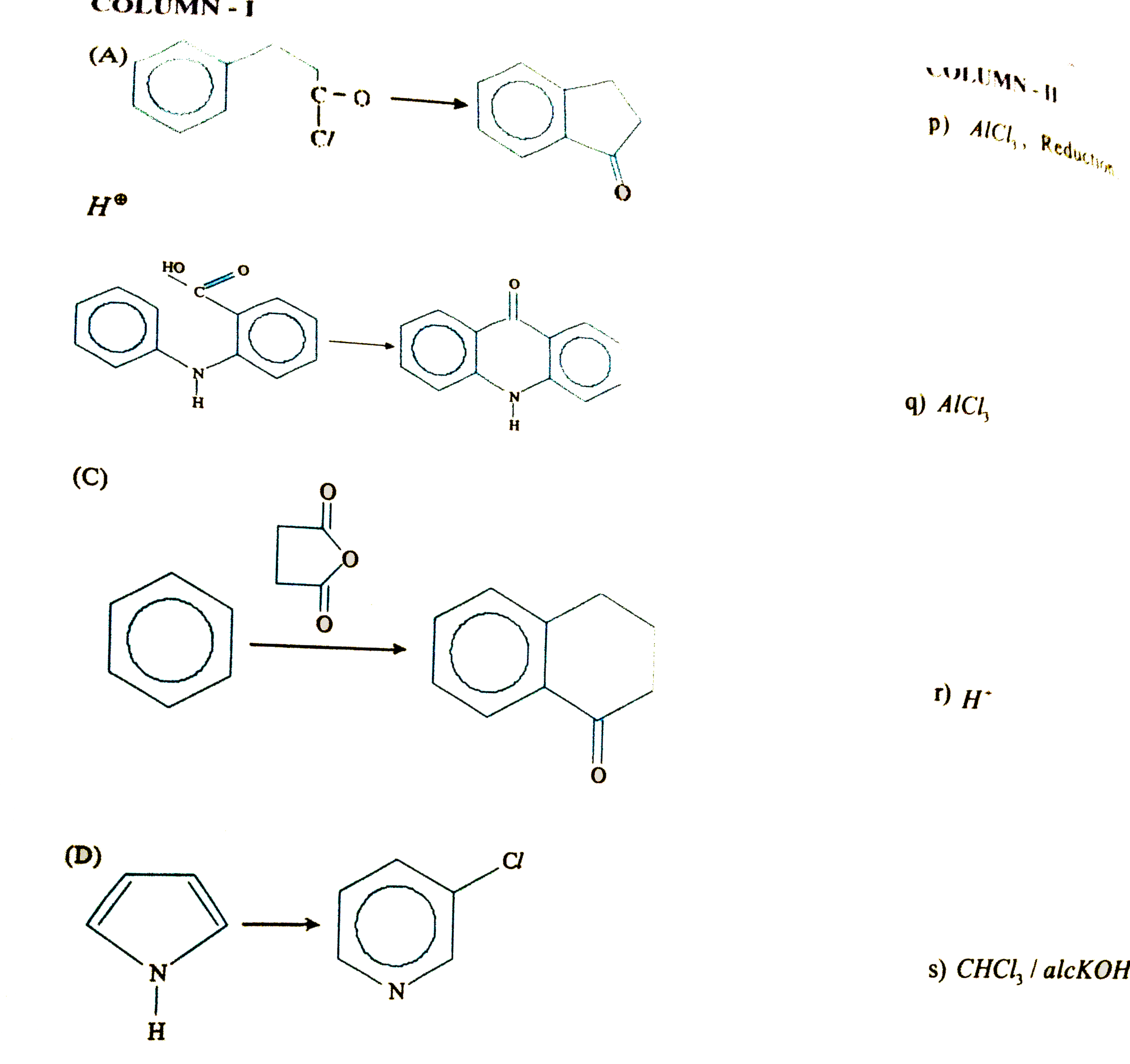
View Solution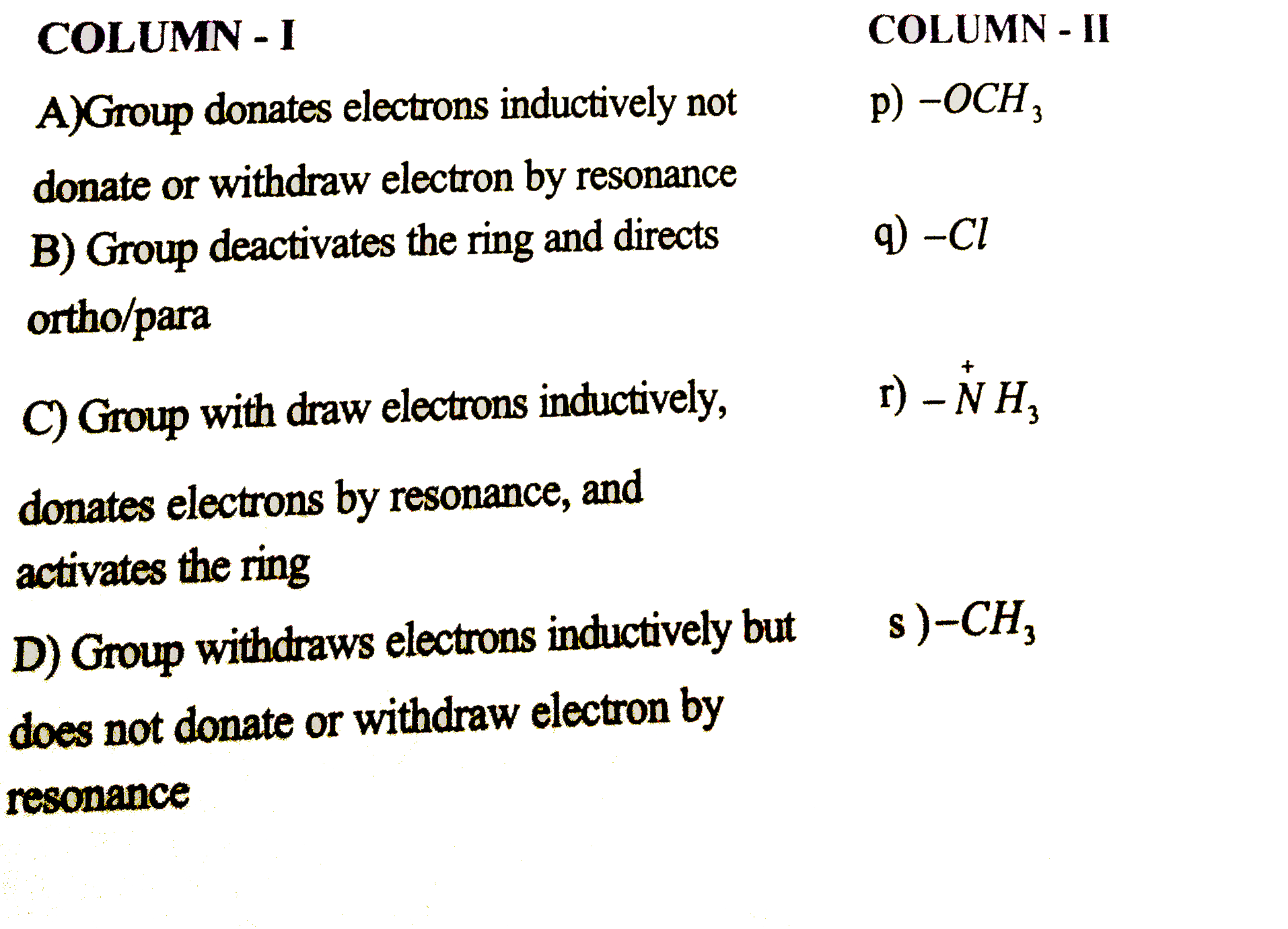
View SolutionMatch the following
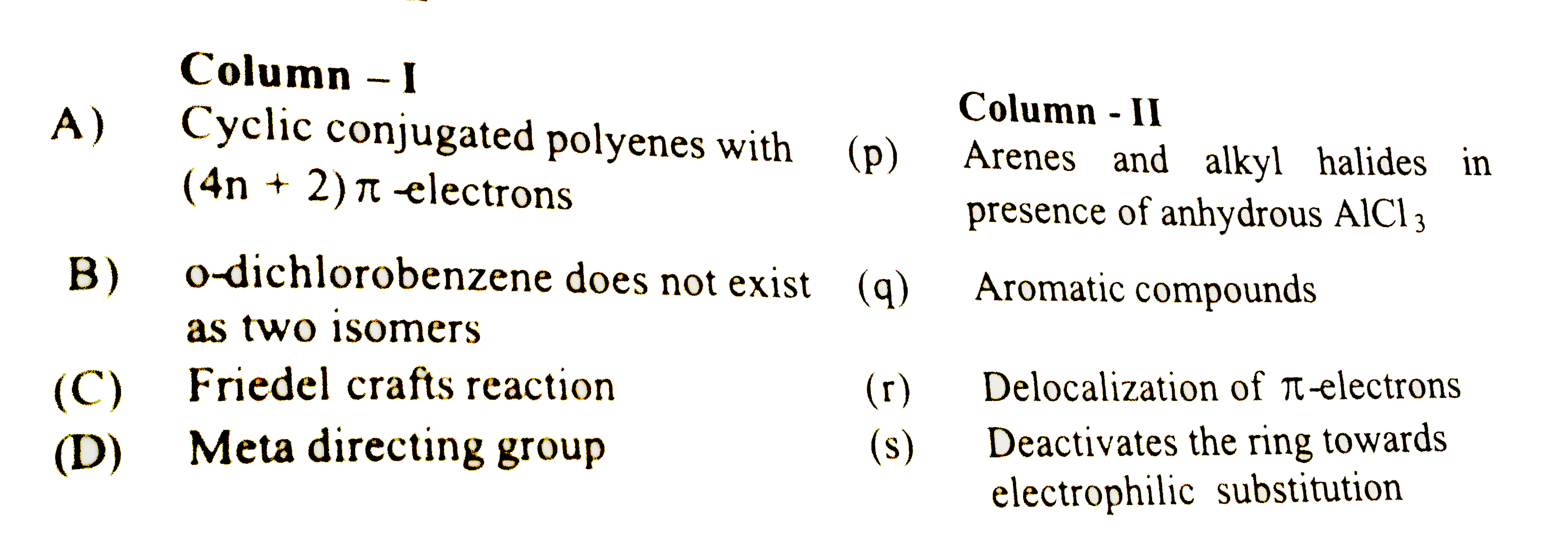 .
.
View SolutionMatch the following:
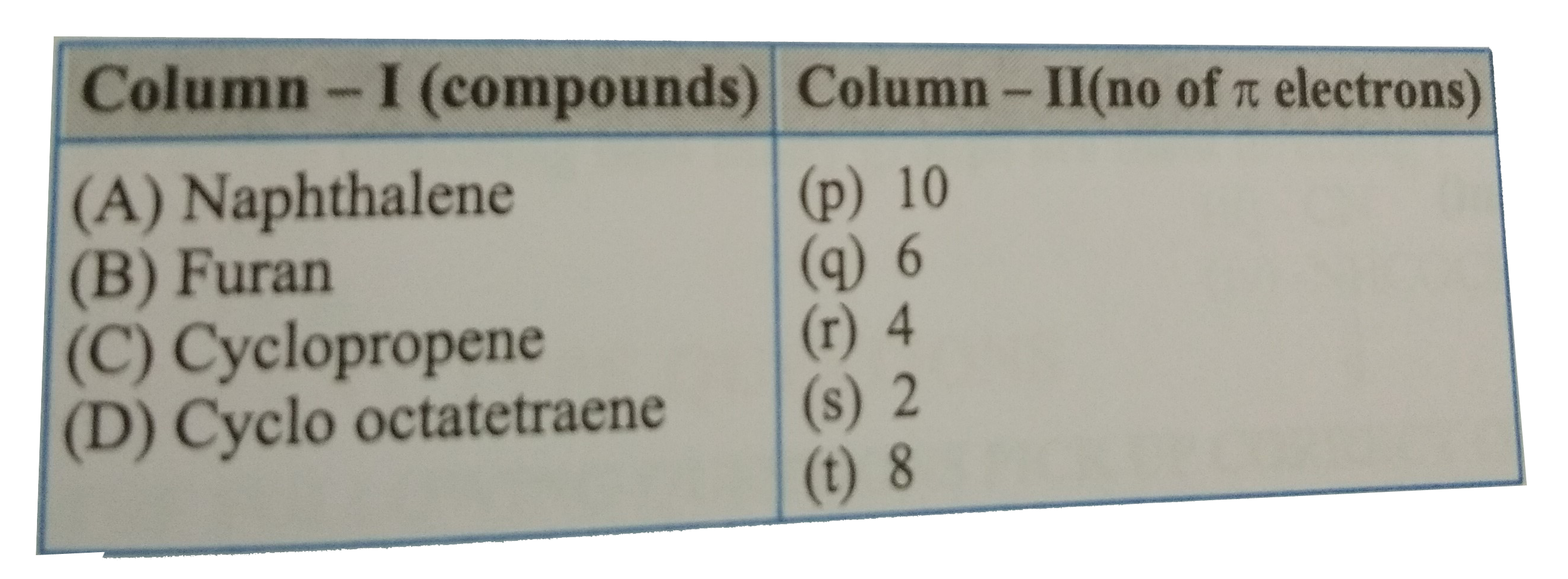
View Solutionhow many species would be expected to exhibit aromatic character?

View Solution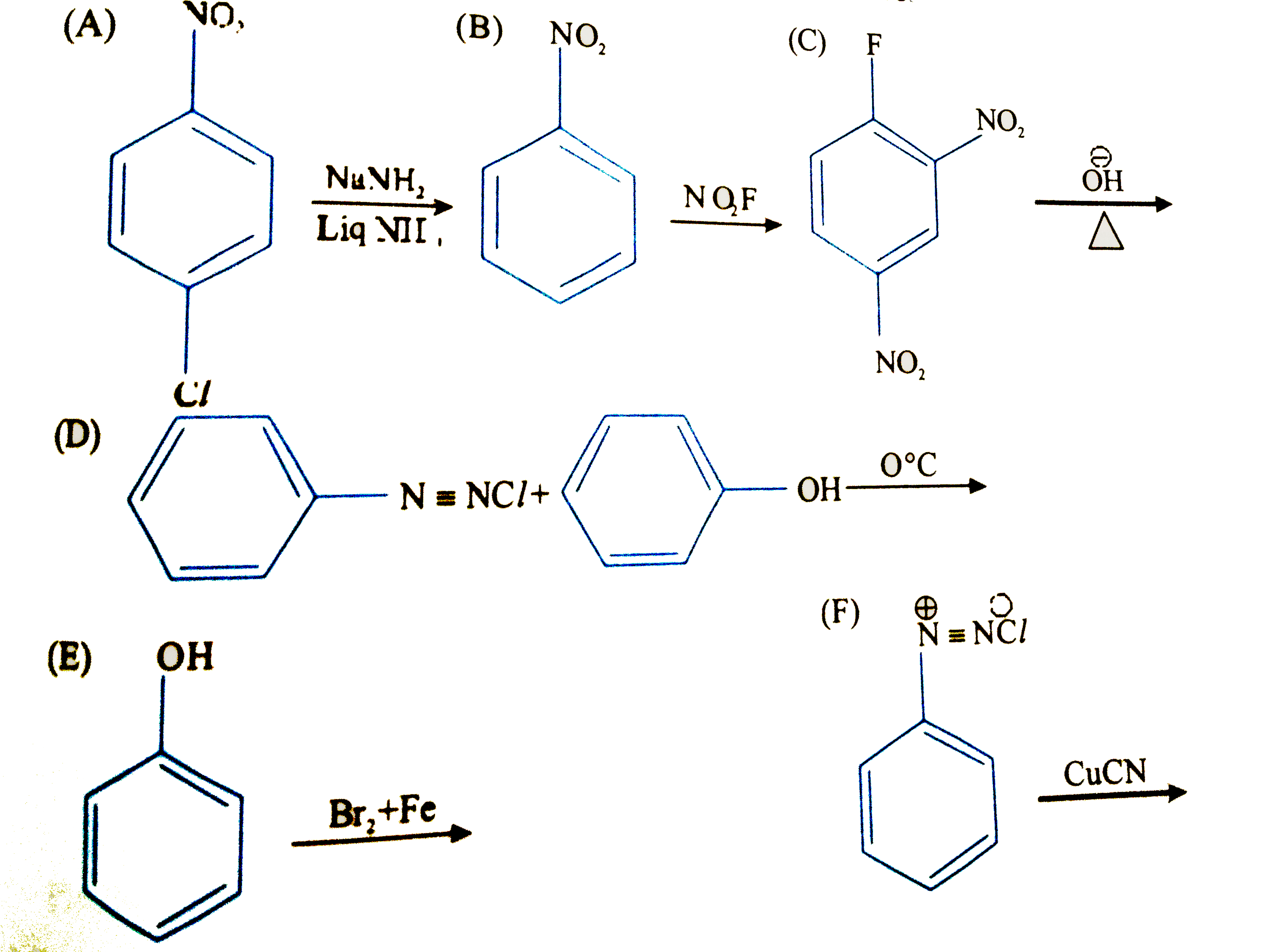
Find out the number of reactions that are electrophilic aromatic substitution aromatic substitution in nature.
View Solution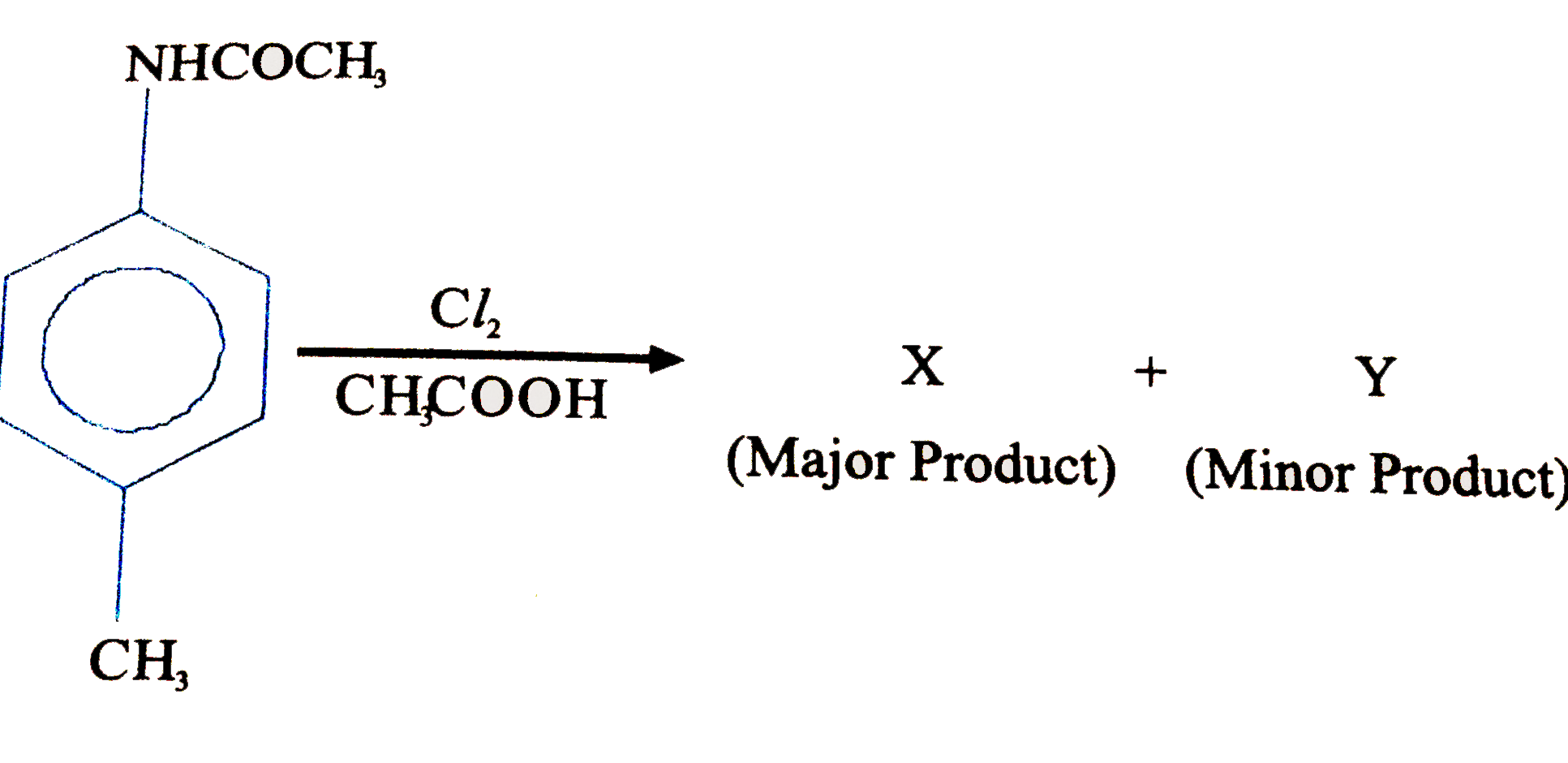
The possition number of 'Cl' in the major product of the reactio (locant)
View Solution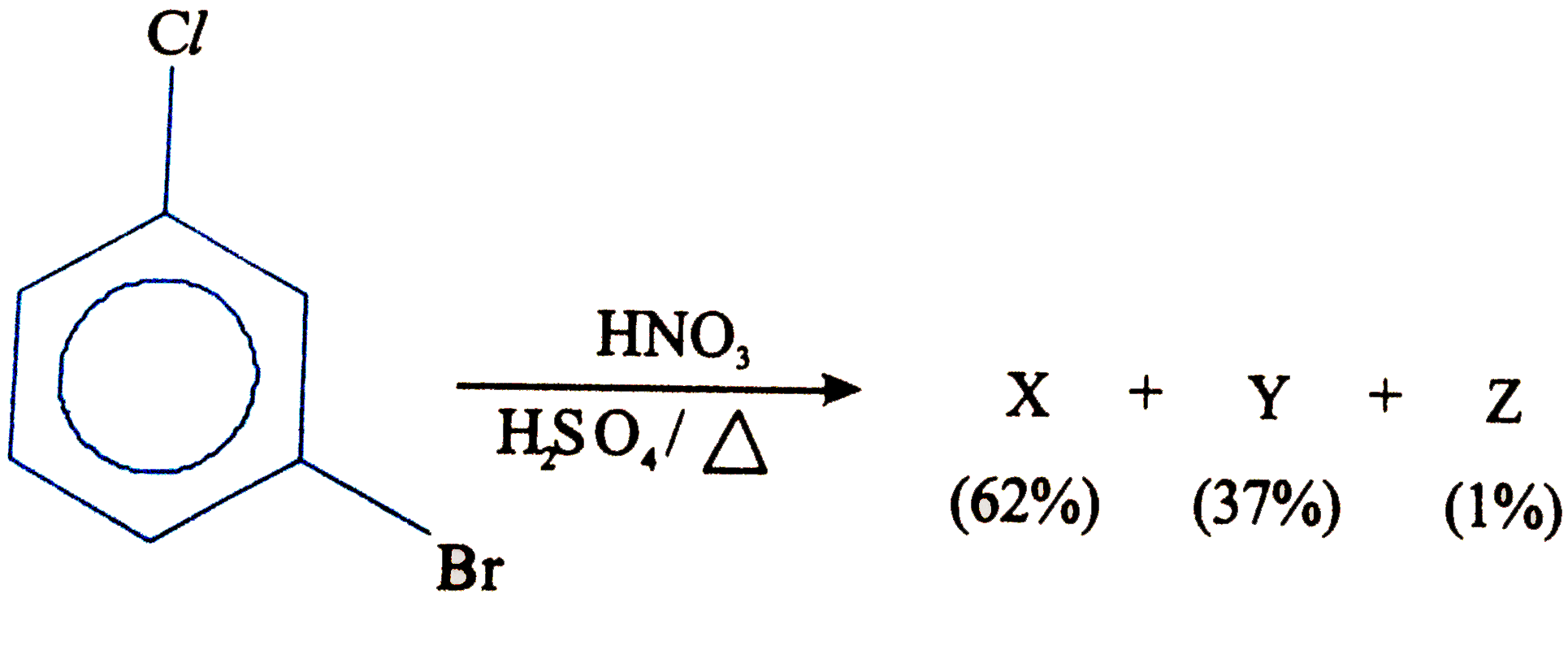
Z the position number of `NO_(2)` Group X,Y,Z aer P,Q,R respectively. The value of P+Q+R is
View Solution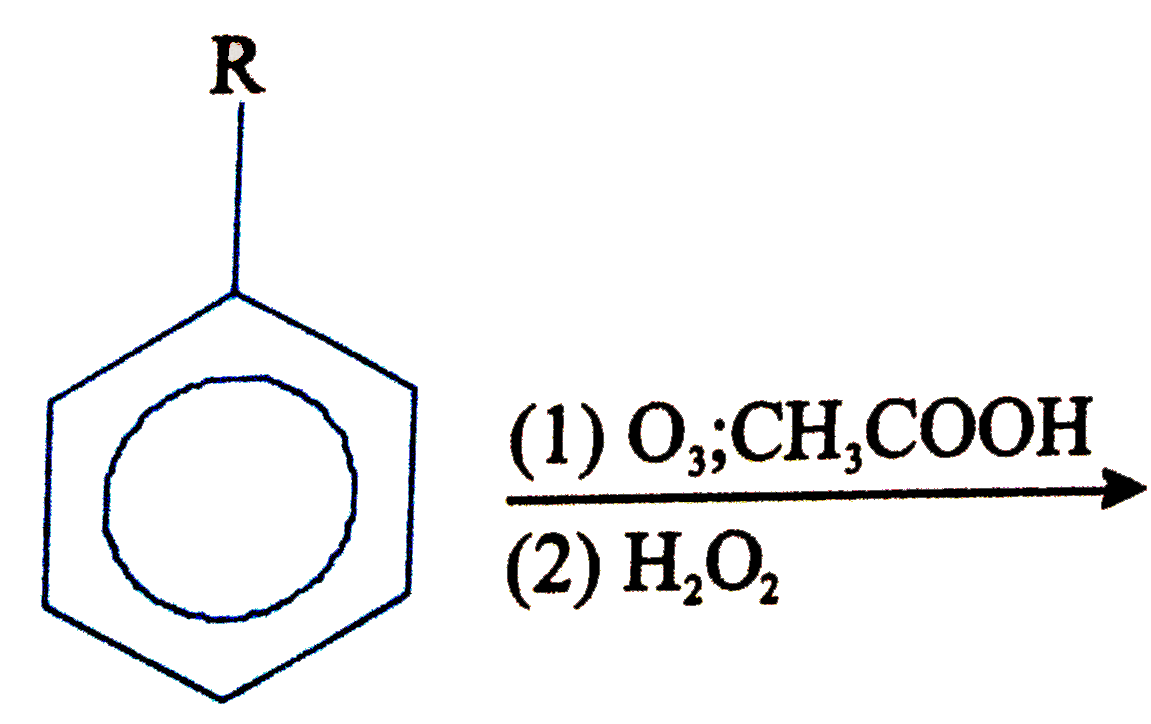 Products. The total number of `pi` bonds in the products is
Products. The total number of `pi` bonds in the products is
View SolutionHow many methods can be used for the preparation of iodobenzene?
(i). `C_(6)H_(6)+I_(2)`
(ii). `C_(6)H_(6)+I_(2)overset(HNO_(3))to`
View SolutionComplete the following reaction
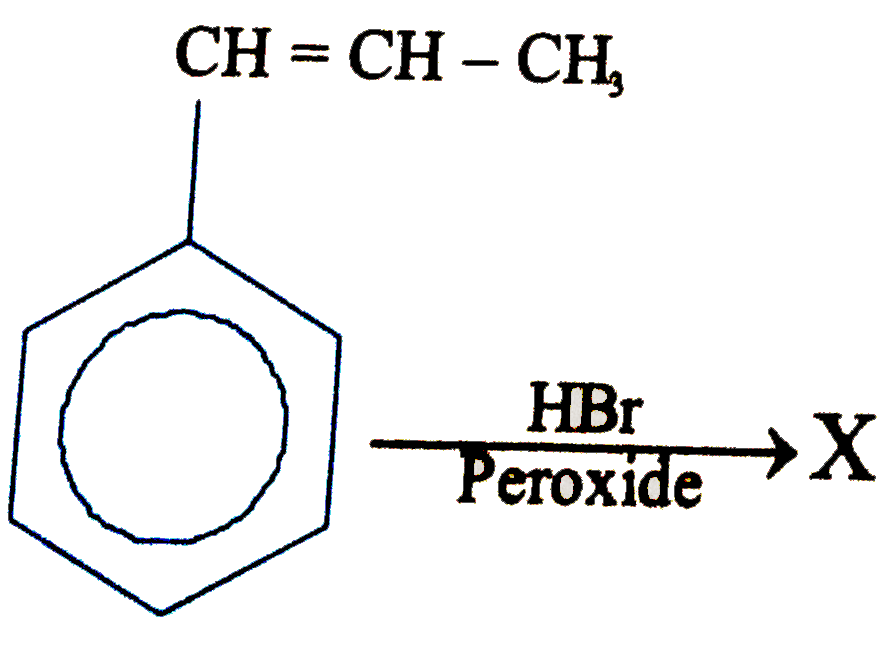
View SolutionHow many products are formed by the nitration of p-Xylene compound?
View SolutionHow many methods can be used for the preparation of the isopropyl benzene?
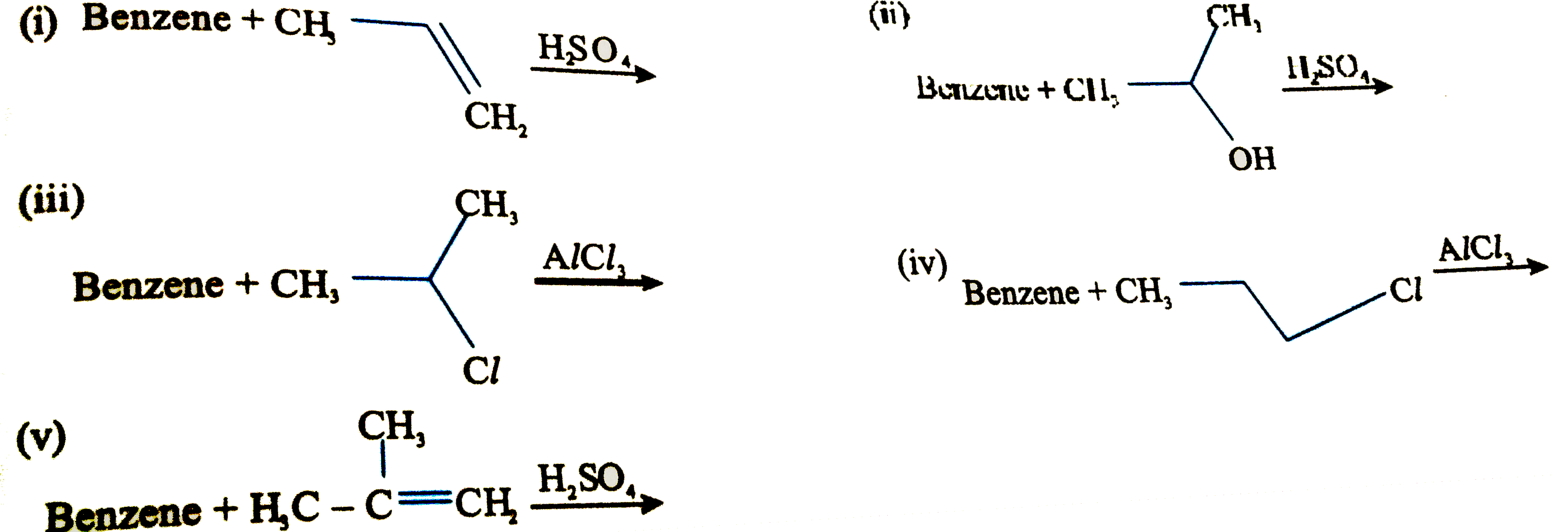
(v). Benzene `+H_(3)C-overset(CH_(3))overset(|)(C)=CH_(3)overset(H_(2)SO_(4))to`
View SolutionOut of the following how many groups are meta directing?
(i). `-COOH`
(ii). `-CN`
(iii). `-COCH_(3)`
(iv). `-NHCOCH_(3)`
View SolutionStatement-I : Nitration of toluene is easier than benzene
Because
Staement-II : The methyl group in touene is electron-releasing
View SolutionStatement-1: Tropylium cation
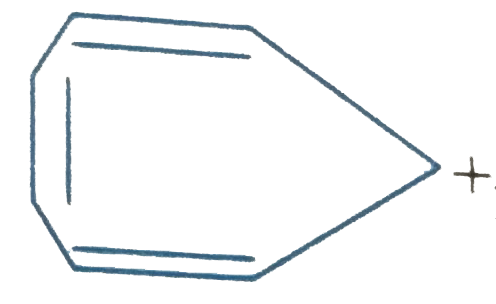 is aromatic in nature
is aromatic in nature
Statement-2: The only property that determines its aromatic behaviour is its planar structure.
View Solution(A) Benene does not decolorise alkaline `KMnO_(4)`.
( R) Benzene is stabilized by resonance and `pi=" electron"` are delocalized.
View SolutionWhat would e the major product in following reaction?

View SolutionWhen benzene is treated with DCl at low temperatures a compound `C_(6)H_(6)DCl`, is formed. On warming the reactants, `C_(6)H_(6)` and DCl are re-formed. However, in the presence of `AlCl_(3)` an isomer of `C_(6)H_(6)DCl` is produced, which on warming, gives mainly `C_(6)H_(5)D` and HCl. Explain.
View Solution
Level-6 questions and complete solutions for chapter BENZENE of NARAYANA CHEMISTRY (HINGLISH) of Class 11